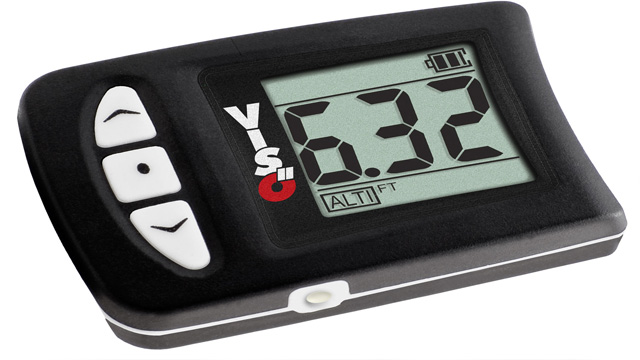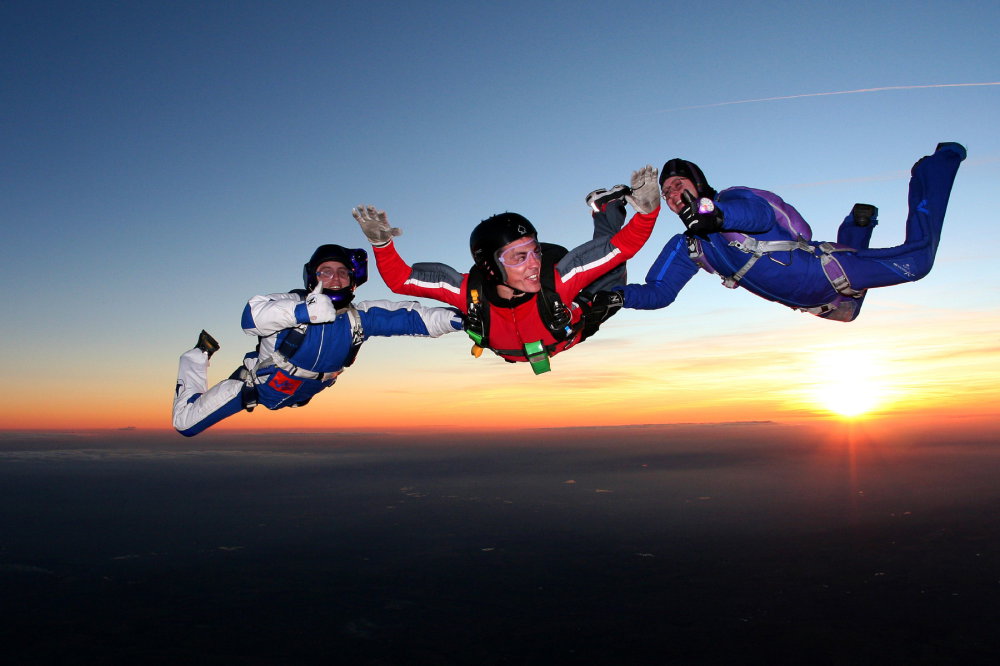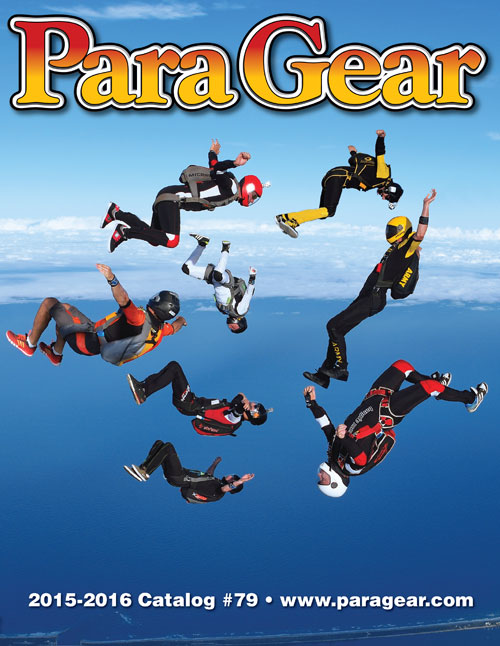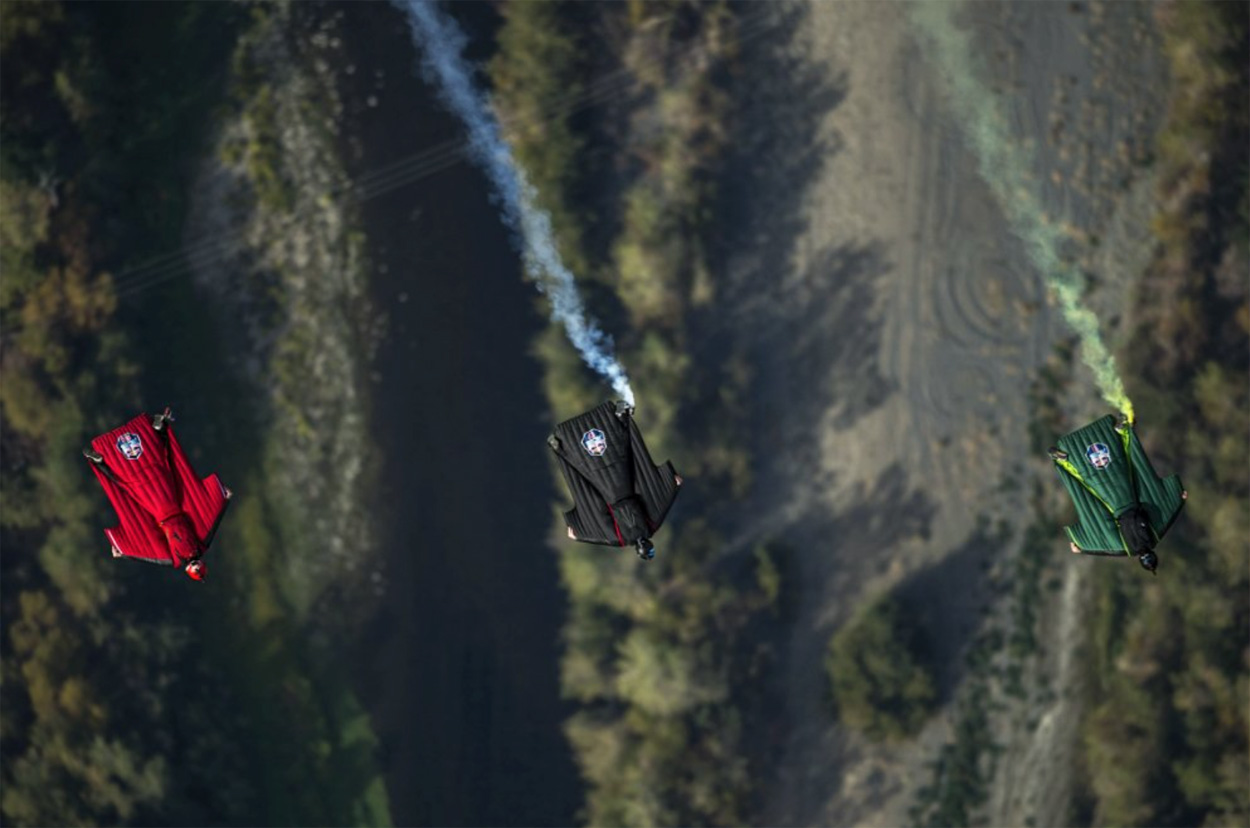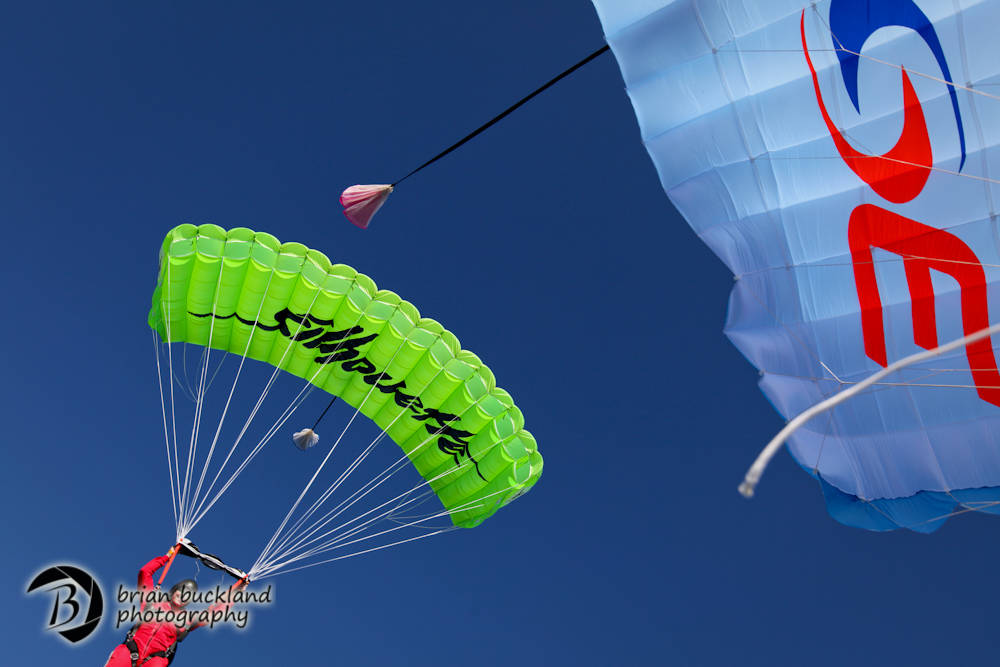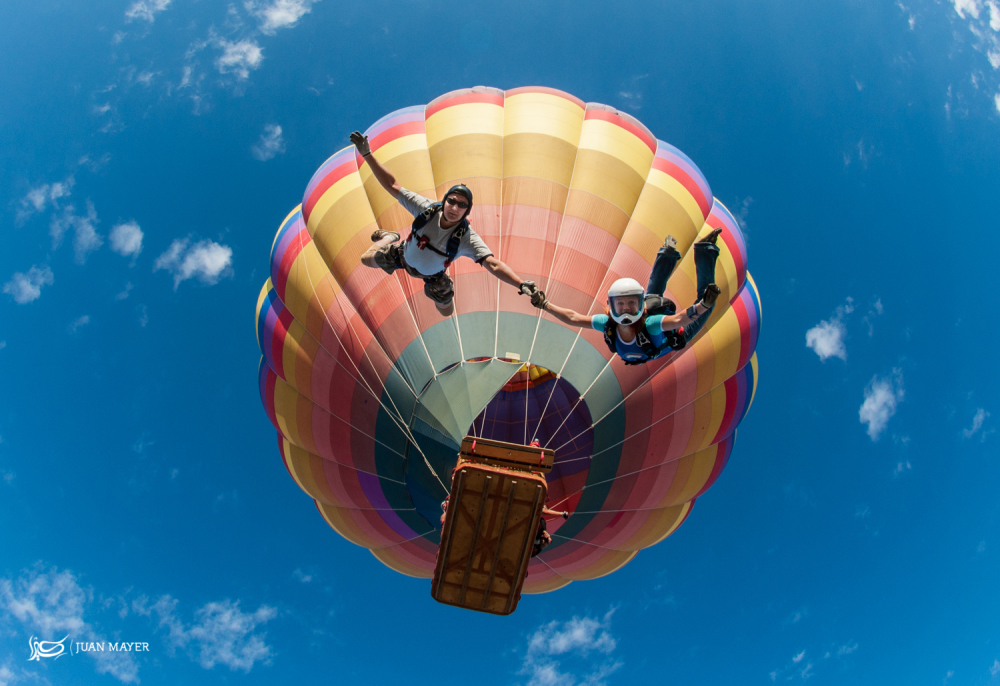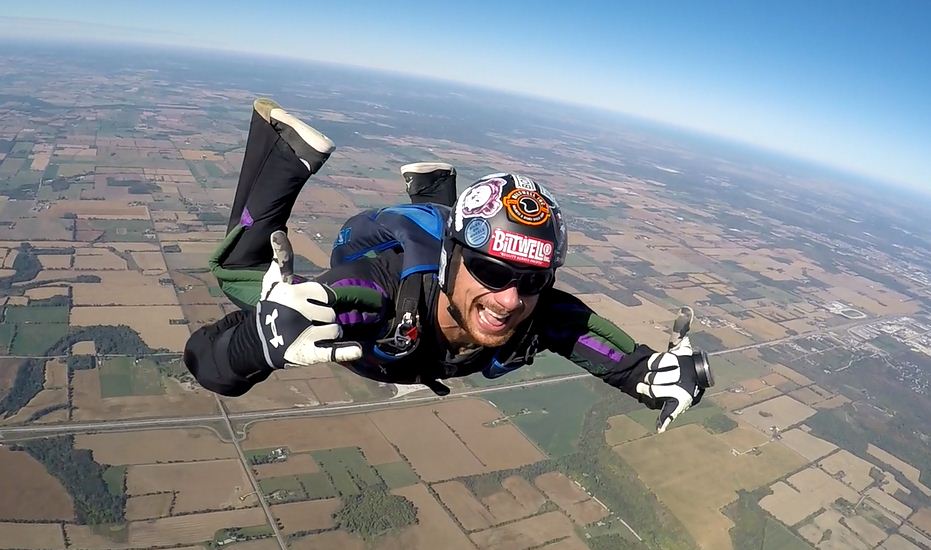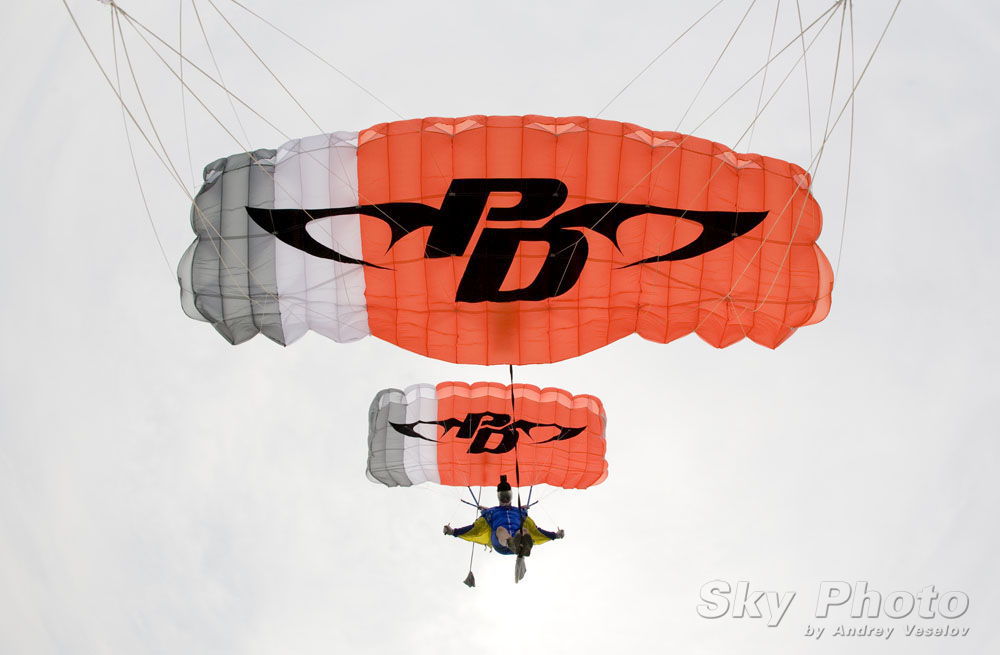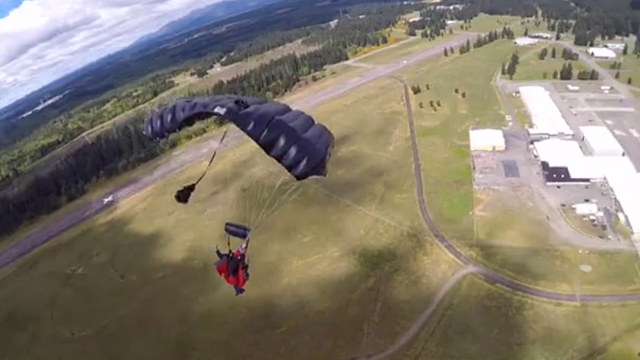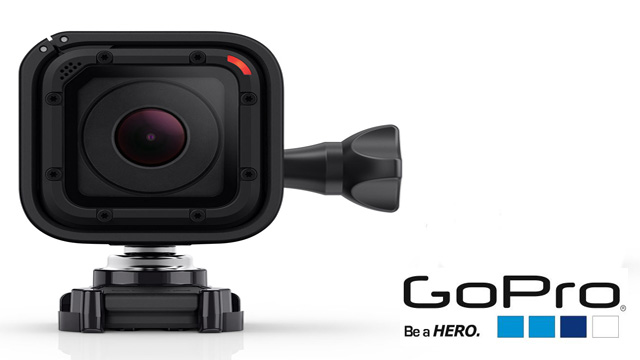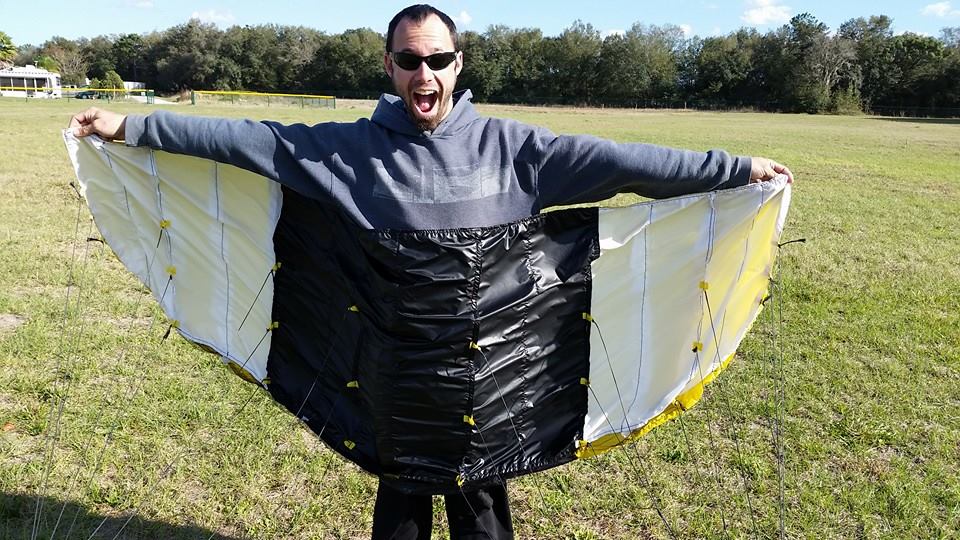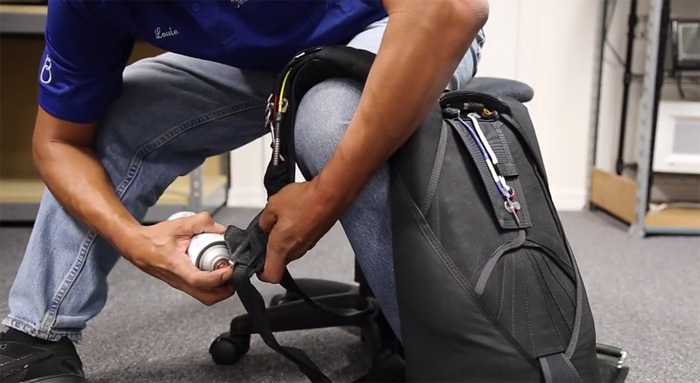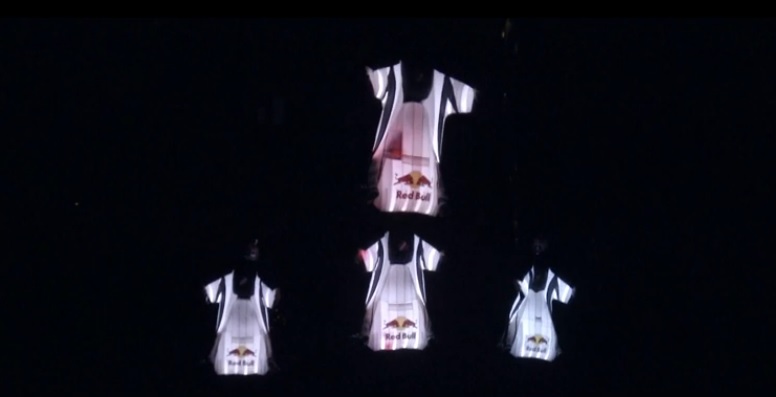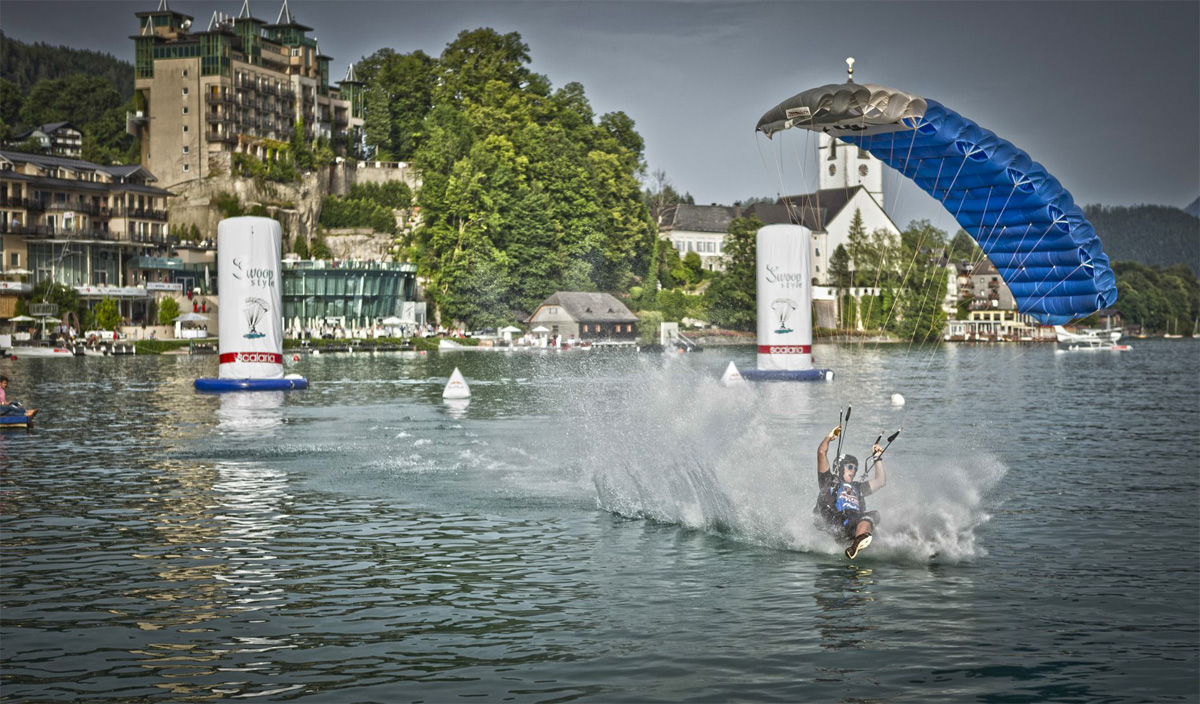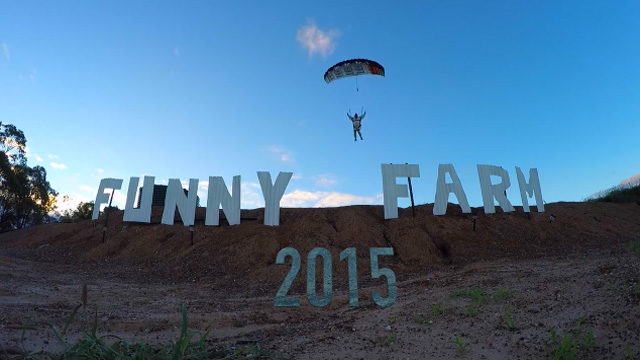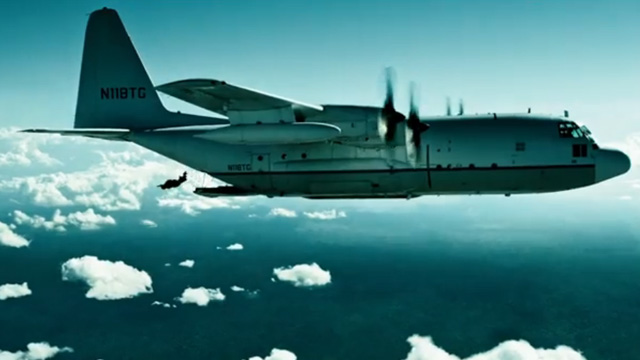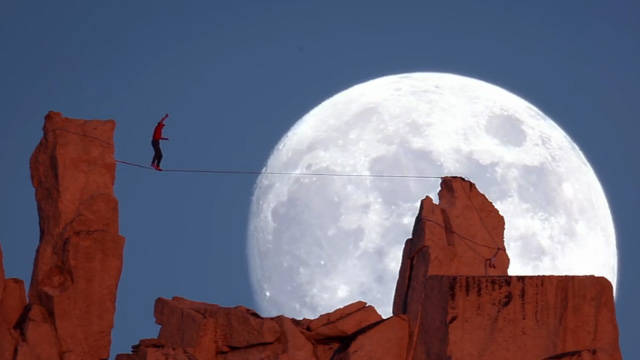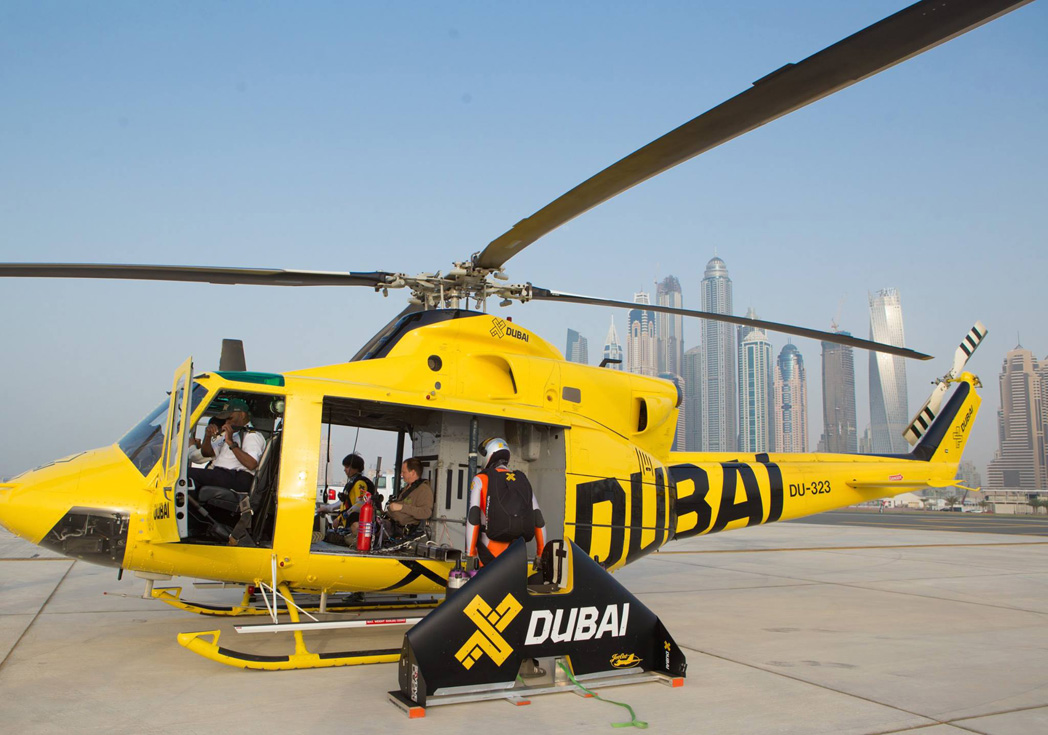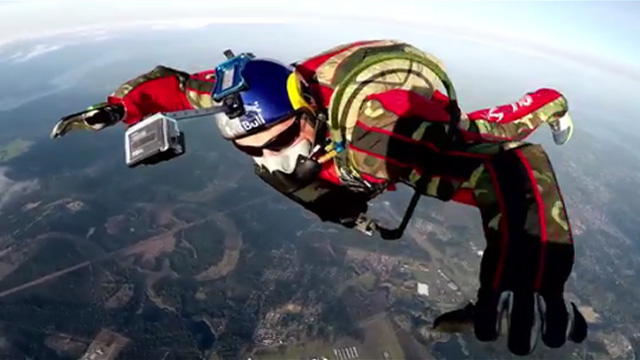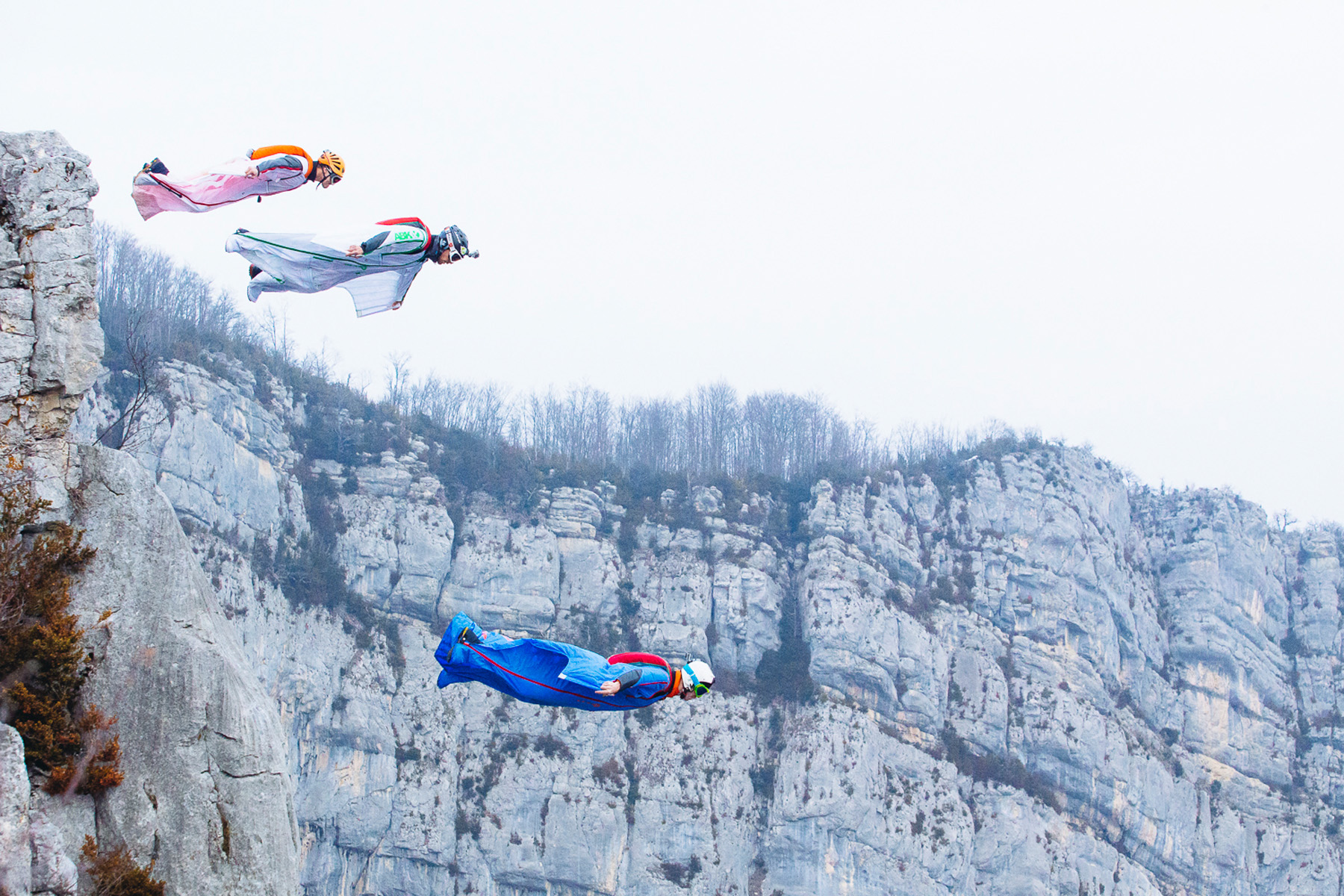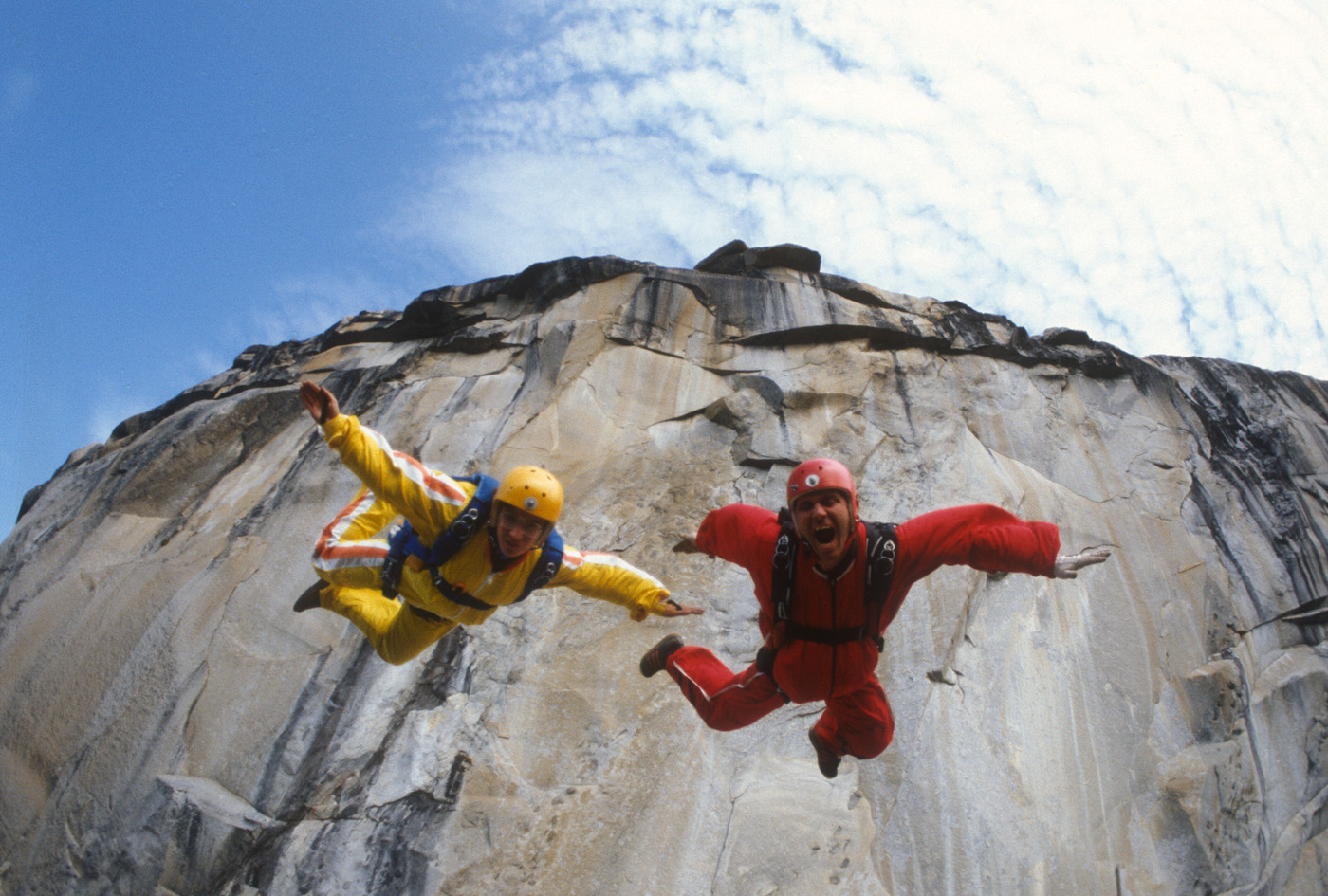Search the Community
Showing results for tags 'news'.
Found 523 results
-
Got a Christmas bonus that needs spending? Have you left it a bit late in getting your Christmas shopping done? Still need to pick up something for one of your mates or partner? Well if they happen to skydive, we've got a few suggestions for you last minute shoppers in order to make sure the tree isn't left bare this month. Skydiving Christmas Cards & Gift Tags ($4-$14)Keep the skydiving spirit through the holidays with Skydiving Christmas Cards and Gift Tags! Available individually or in multi-card packages. More Information Peeksteep Spike Parachute Packing Tool ($20)The skydiver's packing tool is now available in 5 different colors! Brighten your skydiver's holiday with a Parachute Packing Tool in their favorite color. More Information Vented Tropos Arch Goggle ($45)The Vented Kroops Arch goggle features a patent pending soft elastomer frame that provides a comfortable, cool, and dry fit on any face size or shape. More Information ChutingStar eGift Card (Any Amount)The ultimate gift for the skydiver in your life that you just can't decide on what they want or need. The perfect last-minute gift too as the ChutingStar eGift Card is delivered immediately via e-mail! More Information Viso II+ Altimeter ($283)The VISO II+ is a digital faced visual altimeter for those skydivers who prefer a digital display over a traditional analog display. VISO II+ is packed with features and is the perfect visual solution for skydivers. More Information Cookie G3 Helmet ($380)Welcome to the G3 headgear, Cookies latest release full-face headgear and a result of significant refinement of the previous full-face headgear. More Information Other potential gift ideas can include: - Skydiving DVDs - Clothing - Rigging Equipment - Sunglasses
-
Over the course of the next few weeks we will be sharing the journal of John McDarby, who documented his experience as an AFF student. This journal should allow for new students to get an idea of what to experience during their first steps into the sport. Accelerated freefall (AFF) is a method of skydiving training. This method of skydiving training is called "accelerated" because the progression is the fastest way to experience solo freefall, normally from 10,000 to 15,000 feet "Above Ground Level" (AGL). “As far back as I can remember, I've always wanted to be a gangster. ...” Ray Liotta Goodfellas, I always loved that movie. I guess it’s kind of like living that gangster life for 2hrs which is so utterly foreign to anything most of us would know. Skydiving is something I’d always wanted to try, ever since a young age. I remember seeing a clip of people in a wind tunnel when I was about 12 or 13 and thinking “I’ve just got to have a go at that” But the usual trials and tribulations of day to day living, seemed to perpetually push it out. During my twenties, I actually went as far as getting the sponsor forms to do a charity tandem. But that’s as far as it got. It was placed on the back burner for another twenty years. One fateful day, a surprise email from my cousins wife arrived. “Can you come up with an idea for you and him to do something different for his 40th” was the request. Race car driving? White water rafting? Paintball? All the usual silly ideas we both bounced off each other. Then, the light bulb went “ping” We booked in for us both to do a tandem – he was as yet, unaware. The day came and the colour drained from his face when informed of the plan for the next few hours. That’s actually on video somewhere and is quite comical. For me, I’d had a month or two in order to come to terms with it. As it turned out, the rain came and the gig was off – honestly, I think we were both equally relieved and disappointed. We re-booked and again, it was rained off. I decided at that point, if it was rained off a third time, then that was it for me. It was a proper sign that skydiving was not something I was destined to take part in. But not this time. This time Thunderbirds were go. The day came and we hit the DZ. We signed our lives away, we jumped and we loved it. It was a surreal experience and one that I will never forget. No matter how many jumps I ever make through the rest of my skydiving career, I will never forget that first time sitting on the edge, feet dangling. On video, my tandem master asks prior to the jump: “Will you do this again or is this a one off, tick the box?” To which I reply categorically “one time, one time only” Yes, let’s see how that worked out... I must apologise for the soundtrack. Prior to the jump, whilst at the DZ, we had to select 3 songs from a list of thousands that were to be added to our video afterwards. I was much too preoccupied to choose them so the task was given to my niece of 12 years. “This will be hilarious” was the giggling consensus. And I was informed in no uncertain terms, that I was not to see the track listing until the final product. Which was later aired on the big screen in the hanger to much laughter. I’m a living joke... But...the deal made with my niece was that if she decided to choose the songs, then she would have to do a tandem when she turns 18. Aoife, the clock is ticking! So that was it. I walked away from a wonderful tandem experience and was determined that if nothing else, I had to complete “at least” one more jump. I couldn’t go through life and not try it again Knowing me and how I think, it made sense to sign up for AFF rather than another tandem. “I’ll do the ground school and one jump, then reassess” I told myself. Multiple emails back and forward to the IPC Irish Parachute Club, had me booked into school for the second Saturday in April – about 7 weeks after the tandem. I was hyper and couldn’t wait for the day to come. As it approached, the bravado began to wear off and nobody was happier than me that we did not get to jump that day due to weather. We would have to wait for the following Saturday. This was something that stuck with me until AFF6. I would never have been upset not getting any of the first 4 AFF jumps on the day. It was a genuine fight with myself to gear up and just do it. But afterwards, it was always such a buzz. At times, I even thought “I wish I could just fast forward the jump bit and get to the après-jump buzz” and go home. Unfortunately, you have to load and exit to get that. Now, I’m really happy and excited during the hour or so prior to kicking off. But that took a few jumps to get there. During the next week, I read the SIM twice. I looked at everything there was to see on YouTube. I even had my first skydive dream! Figuring that jumping from a plane, this time unattached to someone who knew what they were doing, I thought it best to know as much as I could. I did the AFF1 dive flow, over and over again in my head during the drive to and from work. I ran over my emergency procedures again and again. In fact, I still have the laminated cards with the bullet points, sitting on the dash of the car so that I see them every single day. I practice my EPs daily – numerous times. Rinse and repeat….always repeat. I went through my notes from class – why was I the only person taking notes? I’d never paid as much attention in all my school and college years combined. I asked more questions in that classroom than everyone else put together. This stuff was important and I wanted to know it down here rather than not know it up there. And then the day came… Part 2 will be published shortly, keep an eye out on the dropzone.com homepage to follow John's journey through AFF
-
Over the years Para Gear has used photos from all of skydiving's disciplines. We do not have a preference as far as what type of skydiving photo it is, rather we look for something that either is eye-catching or pleasing to the eye. In light of the digital age, we are also able to use photos that in one way or another may be less than perfect and enhance them, removing blemishes, flipping images, altering colors, etc. The following are preferences. However what we prefer and what we get, or choose, are not always the same. If however we came down to a choice between two photos of equal quality, we would opt for the one that met more of our preferences. We typically prefer that the photo be brighter. In the past we have used sunset photos and even a night jump photo, although by and large most of the photos are daytime. We like the subject of the image to have contrast with the background. Subjects that are wearing brighter more colorful clothing usually stand out more. We prefer to have the people in the photo wearing equipment since that is what we sell. Headgear, goggles, jumpsuits, altimeters, audible altimeters, and gloves are all good. We also prefer to see skydivers wearing head and foot protection. We do not print any BASE jumping nor any Tandem photographs. No submissions of these will be accepted. We are not interested an any photos of individual or groups of skydivers standing on the ground Our basic criteria is as follows: Vertical Format. The front and back covers of the catalog are both in a vertical format. We can use a horizontal (landscape) shot, as opposed to a vertical (portrait), and then crop it as long as the image lies within a vertical cropping. Photo Quality. The front and back cover shots will be printed as 8 ½ x 11 in 300 dpi format. Any film that can hold its quality up to this size and print dpi is fine. Digital format is preferred. In the event of a final cover choice, we prefer to be sent the original digital image or slide for getting the best quality out of the image. Back Cover Photo. The back cover photo is no different from the front except in one respect. We need to have room on the left side of the image for the thumb index. In the past we have taken images and been able to horizontally flip them thereby creating this room. Originality. Anything that is original, eye-catching, or makes someone take more notice of the catalog covers is something we look for. It could be a photo from a unique camera position or angle, a scenic skydive, shots under canopy, landings, etc. We look for photos that have not been previously published and most likely would not accept them if they have, as we want a photo that no one else has seen yet. We also do not want any photos that are chosen as the front or back covers to be used for other non Para Gear advertising for a period of one year. Para Gear offers $500.00 each for both the front and back covers we choose. Our current deadline for catalog cover submissions is January 11th 2016. Sending sample pictures by e-mail to [email protected], If you are sending sample digital pictures please note that they do not need to be in a very large format. If we like the sample picture we will then ask you to send the higher quality original. Please feel free to contact me directly with any questions.
-
World-renowned author and skydiver Dan Poynter (D-454) passed away peacefully yesterday after recently being diagnosed with Acute Myeloid Leukemia and Renal Failure. While Dan may no longer be with us, his writings and the connections he formed within the skydiving community will ensure his legacy is kept alive for a long time to come. He will be remembered not only for his books, which span more than 35 years and include more than 120 titles, but also for his attitude which drove his success. Dan's career began with the management of a parachute company in California, after which he became more involved with the design aspect of parachutes and became a design specialist. An active and skilled skydiver, Dan began to write about his knowledge of the sport with a seemingly unrivaled knowledge, specifically with regards to equipment. In 1972 he released "The Parachute Manual—A Technical Treatise on the Parachute", which is often seen as one of the leading early publications on skydiving gear. In 1978 Dan released the original copy of "Parachuting: The Skydiver's Handbook" - a book that has been seen by many as one of the cornerstones of skydiving literature. Unlike some of Dan's other work which was focused more on the technical aspects and aimed towards riggers, The Skydiver's Handbook brought to the table a collection of extremely valuable information and advice for all skydivers, from those just beginning their journey to those who already have several thousand jumps. Dan's publications were not limited to his self-published books either, and his column in Parachutist magazine was always thoroughly enjoyed by many. Dan developed a keen interest in hang gliding as well, which lead him to write the book "Hang Gliding" which became a bestseller with over 130 000 copies sold and remains one of Dan's most recognized works. The fact that Dan was writing on topics with a smaller audience posed challenges for the writer, who realized his best option in the distribution of his work was to self-publish. Dan established 'Para Publishing', where he would spend years being the sole driving force of the company. Writing, publishing, promotion and even shipping was all handled by Dan, despite the numerous copies being sold. His determination and drive in the management of Para Publishing lead him to write a book on his experience, "The Self-Publishing Manual". It also lead to him becoming a well known motivational speaker. Dan Poynter had always been ahead of his time, from his early technical books on skydiving equipment right through to his methods of book distribution. In 1996 Dan was already selling information products from his website, something that would only become common place years later. His achievements both in publishing and in skydiving will not soon be forgotten, with both his work and countless awards testament to the impact he had on skydivers around the world.
-
Started jumping with John Willsey in 1972 at various Arizona DZs after getting my D at Elsinore in 68. We made the first 23 way at Casa Grande in 73. He came to it me on Maui about 12 yrs ago. Never was a nicer guy. Just heard about death Oct 30, 2015. Anyone with details can e-mail me at [email protected]
-
Over the past two years, the Squirrel R&D; Team have been working hard on high performance wingsuits for competitive events. Their focus on this segment of the sport began when the first edition of the RedBull ACES was being put together for 2014. It happened to coincide with Squirrel’s development timeline on the Colugo 2, and it provided the team with an excellent opportunity to test the final prototypes against the fastest suits on the market, being flown by the best pilots in the world. In 2014, Andy Farrington won the ACES event flying a race prototype that included a lot of features that went on to become the C2. The Squirrel team say that development is a constant. As soon as the C2 was released, efforts began on creating a higher performance race suit that could be used by team pilots in the next ACES event, and other competitive wingsuit competitions. Mainly Squirrel had their eye on ACES 2015. But with the first US Wingsuit Nationals being announced, and the 2015 WWL planned for October, there was more than one reason to redouble efforts on the C-RACE development. The first C-RACE suits that were delivered to pilots outside of Squirrel’s headquarters in WA state, USA, went to a few pilots attending the US Nationals. Only a few suits were delivered to pilots going to the event, but 4 of them made the top 10, including Noah Bahnson and Chris Geiler, who took 2nd and 3rd respectively. The C-RACE is considerably smaller in surface area than the designs that have traditionally done well in the PPC format, and the significance of this size difference is important. For a suit with so much less surface to be competing so well in the PPC spoke to its speed and efficiency. Squirrel focused on profile efficiency and stability at high speeds, instead of increasing surface to score well in the time and distance tasks. Next came the WWL wingsuit race in China. The final podium saw Noah Bahnson in first overall, and Julian Boulle in second. Both were flying the C-RACE and had fought their way through multiple heats against the Phoenix Fly team pilots at the event, who were flying a clearly excellent new race suit, and flying it well. Relative newcomer, Nathan Jones, impressively took 3rd place flying his Phoenix Fly suit in this event. Of all the wingsuit races in the world, only one involves a mile-long slalom course involving 4000 vertical feet of turns, dives, and straightaways. RedBull ACES truly encompasses every aspect of wingsuit flight, and is an incredibly dynamic and challenging environment. Furthermore, it is the only 4-cross event, allowing multiple pilots to race head-to-head, offering the best chances of a fair result (in contrast, PPC competition runs necessarily take place with jumpers flying solo, through different wind patterns and conditions and often at different times, making truly accurate comparisons impossible). Because of this, the 2015 ACES event was the most important to Squirrel. The team made efforts to support as many of the invited pilots as possible, and trained relentlessly for this type of competition – the mission was all-out speed, with precise agility. Four pilots diving through slalom gates that are suspended from helicopters and held taught by 150lb steel weights is not a situation to take lightly. It was critical to design a suit that would not only allow team pilots to overtake everything else, but also maintain agility and precision through a course full of very real hazards. In the end, the C-RACE prevailed. Only C-RACE pilots made the final, sweeping the podium. 28 out of the 40 invited pilots at the event were flying C-RACEs. Andy Farrington defended his title as top ACE, Noah Bahnson took second flying the same suit that he flew to podium finishes in Chicago and China a few weeks before, and Matt Gerdes, co-founder of Squirrel and co-designer of the C-RACE, placed third. All three podium finishers were also flying the Squirrel EPICENE main parachute, which was by far the most popular parachute at the race. Squirrel says that the C-RACE is available to qualified pilots only, and the design will evolve slowly over the course of 2016. Design features that are tested in the C-RACE will (and have already) trickle down to the other suits in their range.
-
Image by Brian Buckland It is common knowledge that wing-loading has profound effects on the way parachutes perform. Furthermore, it appears that even if the wing-loading is exactly the same between two otherwise identical parachutes, different size canopies fly quite differently. In other words, if you fly a 210 square foot parachute of a given design with lots of additional weight to achieve a loading of say, one pound per square foot, a 150 at the exact same wing-loading will usually have a steeper glide ratio, faster turns, and demonstrate a longer recovery arc following a high airspeed maneuver. This means that, regardless of the wing-loading, all small canopies are high performance, and should be treated accordingly. There are many explanations for this non-linear relationship, and in this article I will discuss some of the most significant governing variables. Test flight data shows us that small wings, regardless of wing-loading, will be more radical than their larger counterparts, all other design aspects being equal, however the degree to which they are different depends of the model of the canopy. Nevertheless, the trend is consistent and predictable. The most common explanation for these differences is that it is due to differences in line length. Smaller canopies do have shorter lines on the whole. Although it is true that some aspects of a parachute’s performance increases as line length reduces, this only applies to mobility about the roll, pitch and yaw axis. The effects on recovery arc tend to have the opposite response to line length. In other words, a parachute with longer lines tends to exhibit a longer recovery arc. To explain these counter-intuitive effects, we must look elsewhere for an explanation. The other aspect, previously unconsidered, is the relationship of the canopy's internal volume to its surface area. Essentially, the volume displaced by the airfoil can be thought of as a key aspect of the overall DRAG. Of course the shape of the wing itself is vitally relevant to the drag coefficient, but for the purposes of this discussion, let’s focus on the effects of drag from the perspective of simple air displacement, like a footprint in the sky. The fatter the airfoil, the more drag it will exhibit. This means that a “fat” parachute will sit at a higher angle of attack in full flight, based on the balance of power between the airfoil's drag (D1) and that of the suspended load, the jumper (D2). Further, the drag value of a “fat” airfoil will increase markedly with airspeed, and therefore large objects will suffer more drag than “skinny” airfoils at high speed. The wing, therefore, will “want” to return to the overhead position more aggressively on fatter airfoils, as a general rule. Let's take those aerodynamic principles to the realm of parachute sizing. When a parachute design is scaled, for the most part, the entire wing is scaled simultaneously. This is the same geometric progression as a matchbox car: same three dimensional proportions, but a different size. When we want to make a parachute larger, we simply multiply each dimension by a “scale factor”, a single number that will result in the size change we desire. When we apply this mathematical model to parachute designs, we create an unwanted effect: disproportionate scale factors relating to area and volume. Simply put, the number we use to scale the parachute is based on the "square footage" of the wing, and this is of course, a square function (X²). The volume on the other hand, is governed by a cube function, (X³). This means that when we increase the height of the rib at the same rate as the span and the chord, we inadvertently make the wing too fat as we scale upwards, and too thin when we scale down. This is one of the reasons why a 120 flies very differently than a 170, even at the exact same wing-loading and body drag component. The wings only appear to be the same, but they are most decidedly not the same from a volumetric perspective. So, one might say, why don't we make the height of the airfoil on smaller wings greater, and that of larger wings smaller, proportionately? This is sometimes done and it works to a certain degree. However, if we were to search for a formula that would allow us to scale the volume at the same rate as the area, we would have to keep the rib height the same on all sizes of a design. I worked this out with a brilliant Tasmanian mathematician on flight back from Sydney many years ago. A 120 with the same rib as a 190? That doesn't quite pass the gut check, does it? Only the middle sizes would fly right, and beyond a few degrees of freedom, the system would collapse into chaos, because the fat little wings would have too much drag to be efficient and the big wings would have too little lift to land well, and would be prone to collapse in turbulence due to their flimsy nature by virtue of their low volume. A simple answer does not appear to exist, at least not yet. The heart of the problem is the fact that our industry has grown accustomed to the use of "pounds per square foot" as our way of quantifying parachute size. This leads to the erroneous belief that a given "wing-loading" will result in similar performance for all parachutes regardless of size. This is most certainly not the case, and is dangerously misleading for light weight jumpers striving for that magical one pound per square foot wing-loading. A 120 is inappropriate for someone with less than 100 jumps no matter how much they weigh. So, what do we do? Firstly, we honor the differences in parachute sizes, and downsize very carefully. We make our steps downward based on actual ability and frequency of jumping, and we look for any excuse we can to upsize. In addition to remaining conservative with regards to canopy size, we must go to greater lengths to understand the nature of performance and size. If it is true that performance trends do not appear linear with regards to parachute size, then perhaps the solution is a curved ruler. To that end, I have offered a complex sizing chart to the world that reflects the non-linear nature of parachute sizing and performance for the purpose of downsizing guidance. This easy-to-operate chart has been adopted by many national organizations and local dropzones as the official guidelines for parachute size relative to experience. Born from a brilliant but arguably conservative Swedish chart created by my good friend and colleague, Ola Jameson, who was the Head of Safety (Riksinstructor) for the SFF at the time. My somewhat less conservative version of the “sizing chart” offers suggestions for parachute size relative to weight, rather than simple wing-loading alone as the defining factor. This allows the recommended parachute size for a heavy person to be a higher wing-loading than that which is suggested for a lighter person. It is available HERE. The sizing chart does not suggest when the jumper should downsize, but rather limits the degree to which they should decrease their parachute size based on the complex aerodynamic principles effected by wing geometry. The "chart trap" is always a risk with such things, when jumpers automatically step down in size because the chart suggests that a change is reasonable. Decisions based on parachute size and design should always be made based on the actual ability of the jumper, and the other governing factors described in the 22 pages of modifying text that follow the chart. Another consideration I will now put forth to the skydiving community is a fundamental change to the way we define parachute size. Based on the discussion above, a two-dimensional analysis is insufficient to describe what a parachute will do in the sky, and "pounds per square foot" is a very limited 2-D relationship. I suggest that a better model for parachute size definition is Pounds (or kilos) per Cubic foot (or cubic meter). The metric numbers would be far easier to work, if we can get the Yanks and Brits to let go of the Imperial system; but we have to pick our battles, don't we. By using lbs/ft³, we will effectively remove the 2-D bias from the "ruler" as it were, and make the relevant differences more numerically obvious. It may sound like a radical idea at first, but so was the ram air canopy when that showed up, but look how well that worked out. Just because a change is difficult does not make it less necessary. In the interest of moving this new paradigm forward, and in the spirit of the immortal words of Mahatma Gandhi, I will be the change I wish to see in the world. Here are the volumes of my parachutes. It is my hope that other manufacturers will follow suit, in the interest of transparency of our parachutes’ designs, for the good of the skydiving public. The topic of parachute performance prediction is vast, and must continue to be discussed in scientific terms. We must do this because, as one of the few (mostly) self-governing branches of aviation, we are the only true experts in our field. We are the ones who must think outside the old box of established paradigms, and change when change is necessary. We will continue to improve our sport in every way, simply because we love our sport so much that we want to know more, and grow more. The universal passion for knowledge exhibited throughout the skydiving community leads us to a very high level of mutual respect for our fellow jumpers. This precious commodity of solidarity is rare in this world, and we must allow that connection to lead us to always reach for safer procedures built on our ever-increasing understanding of that which saves our lives. Improvement in matters relating to safety is just love of life in motion, and love must be adaptable and smart if it is to last in a complex world. Again and again, skydivers prove to me that they are highly intelligent adventurers committed to safety, and very much worthy of my respect. We will adapt, and we will thrive. About the Author: Brian Germain is a parachute designer, author, teacher, radio personality, keynote speaker with over 15,000 jumps, and has been an active skydiver for 30 years. He is the creator of the famed instructional video "No Sweat: Parachute Packing Made Easy", as well as the critically acclaimed book The Parachute and its Pilot. You can get more of Brian’s teaching at Adventure Wisdom, Big Air Sportz, Transcending Fear, and on his vast YouTube Channel
- 4 comments
- 4
-
- canopy control
- safety
-
See more
Tagged with:
-
Name: Juan Mayer First Jump: 2000 Skydives: 10 000+ Helmet: Handmade Cameras: Nikon (Photos), Sony & Panasonic (Video) Container: neXgen (Aerodyne) Canopy: Pilot 150 Reserve: Smart 150 AAD: Cypres Wingsuit: Havok Carve We recently had the pleasure of speaking with Juan Mayer, one of the most prominent skydive photographers of this decade. From his early skydiving career and his early days in photography to his recently published book. DZ: After completing your skydiving course, how long was it before you decided that you'd want to focus on the photography aspect? Was photography something you had interest in prior to becoming a skydiver? JM: When I started skydiving, the AFF course didn’t exist in Argentina. I started with the static line course using a reserve canopy mounted on the front. My first teacher, Mario “Perro” Rodriguez, was an amazing instructor! I did 4 static line jumps and the feeling was completely overwhelming. A year later, I came back and continued with the same instructor but this time doing tandems. It was like I discovered a completely different world to photograph and after doing only 70 skydives, I started using a video camera on my helmet. At that time the GoPros, or any of those super small cameras, didn’t exist yet, so it wasn’t that easy. I already knew that I wanted to do skydiving photography but the main reason I started taking videos was because after spending all my money on those 70 jumps, I really needed to find a way to continue skydiving. So, at the beginning I started offering my service as a videographer just for half of the price of my jump ticket. DZ: What type of photography did you specialize in prior to skydiving photography, and were there aspects you had learned in those fields that allowed you to bring over into your approach to skydiving photography? JM: I was mostly doing wedding photography. Well, the best thing about doing social photography is that it allows you to practice a lot with your camera, then you really get to learn many things about your equipment. With skydiving photography its harder because in freefall we don’t have a lot of time to play with the setups and different lenses. This is why I always recommend learning from other photographers, especially non-skydiving ones and the most important thing is to practice a lot and make a lot of mistakes. It will give you the skills to really know your camera equipment. DZ: At what point did you notice that your photography could end up becoming a viable career for yourself? JM: That's a really good question, its hard to pinpoint exactly when. The more people asked me for photos, the more it showed me how much they liked them. I then started travelling to countries close to Argentina for different skydiving events. This is when, after almost 15 years in the army, I challenged myself to take a year’s leave without salary, to see if I could pay my bills with skydiving alone. Unfortunately I wasn’t getting the same level of income as I did in the army, but it was enough to get by and it allowed me to continue skydiving. So I quit the army and decided to follow my dreams while making a living out of skydiving photography. But I still remember travelling for the first time outside of Argentina with only 57 jumps. I went to Deland in Florida, and came across the Book of Skydiving Photography by Norman Kent. I remember that moment vividly, loving every single picture I saw and it really confirmed to me what I wanted to do. DZ: How did you go from jumping at Aeroclub Lobos in Argentina, to working for one of the largest and fastest growing dropzones in the world, Skydive Dubai? JM: It was a very long process and it could take me hours to share all the places and moments (good and bad) I went through before I got my contract with Skydive Dubai. Basically, I was following my heart; doing what made me happy, travelling a lot, learning from other videographers and meeting many good people. Just a few anecdotes, I remember sending hundred of emails to every dropzone around the world asking for a job and one day while driving to Lobos in Argentina I got a call from New Zealand telling me that they needed me to work there, but I had to be there in a week. So, even without knowing basic English I sold my car and moved to New Zealand, a place with a totally different language to mine. I lived there for almost a year, which helped me learn English, not fluently, but enough to communicate with others. I also remember going to Brazil to film different events where I met Craig Girard and asking him many times if I could film the AZ Challenge, which was a well known skydiving event at that time. After 3 years of asking I finally got an invitation as a one of the official cameramen, I really couldn’t believe it. DZ: What are some of your most memorable jumps with the camera? JM: I'm lucky, with so many years of skydiving, to have a lot of memorable jumps. But to choose a few of them, I will say, when I was filming one of my sisters doing her first tandem, it was a very special moment! Another memorable jump was documenting an 88 way formation at the AZ Challenge. As I was filming, I watched it being completed and I really couldn’t believe I was there, as a part of that amazing event and capturing it all on camera! And a more recent memorable jump, was in Dubai, when I filmed a skydiver that had an accident 7 years ago which left him in a wheelchair. Seeing his huge smile in freefall after 7 years of waiting for that moment was something incredibly rewarding, really hard to explain with words. I felt super lucky to be there with my cameras filming him in freefall, smiling for more than a minute nonstop! Over the course of more than 15 years of skydiving, I’ve had a lot of memorable jumps, but this is just why I really love photography, because it allows you to capture those seconds, those special moments, forever! DZ: Could you share with us, 3 of your favourite images that you've taken? DZ: Are there any specific disciplines that you prefer to photograph and if so, why is that? JM: I love to photograph any discipline. Sometimes during simple jumps such as with tandems or AFF students I’ve captured images that have made me super happy. But if I had to choose, I would prefer to photograph freestyle. I really think in our sport there is nothing more beautiful that a girl dancing in the sky! DZ: You list Norman Kent as one of your inspirations, and state that it was your goal to take pictures that looked like his. What aspect of Norman Kent's style have you always looked up to most? JM: Definitely, like I mentioned earlier, Norman Kent was, and still is, one of my inspirations and like every novice photographer I tried to emulate others, today I think I have my own style. But what I really like about Norman, is that he is not just focused on capturing a zoomed-in, square picture. He is always trying to show the beauty of the sky and how lucky we are as a skydivers to have such a huge and amazing playground, every single day. DZ: A topic that is hard to avoid with all fields of photography these days is the relation between art and technology. Do you feel that the internet has been a blessing or a curse with regards to being a photographer, and why? JM: Well, when I started skydiving photography we only had film, so we would take a photo, bring it to the store, and then wait a few days until the film was developed. So trying new things and learning different techniques was a long and costly process. We always had to be sure to use the right setup to get a good photo, because we couldn’t try again, especially when filming tandems. Today, with all the digital cameras, we can try as much as we like, which is really good in terms of money and time, but its also true that it makes us more lazy, in terms of preparing the right setups to take a nice photo. Anyways, the relation between art and technology is amazing for us as photographers. Today, within a few seconds, we can share our art and photos freely with million of peoples around the planet, which is a real blessing! DZ: You just recently published a book titled "Ultimate High: Skydiving Behind The Lens", could you tell us a bit about the book and what it contains? JM: Its a hard cover book with 104 pages of skydiving photography. I always wanted to publish a book with my photographs but wasn’t quite sure how to start so I met with designers and people involved with photography books. It was a very long process, choosing the photos, finding the right text, designs, meetings and more meetings, etc, etc, etc. But after 2 long years of hard work, it finally got published. My book contains photos that I took over the years of skydiving in many different places around the world. Most of them being special moments in my life as a skydiver, shared with friends. The book also contains narrative explaining my philosophy as a photographer and skydiver. DZ: The release of your book is no doubt a milestone in your life, what other goals do you have set which you hope to achieve in the future? JM: Yes it’s definitely a milestone! I have many goals, but the most important ones are to continue sharing special moments with friends and taking photos that makes me happy. And to mention a dream, I wish one day I can enjoy the sky with my little daughter doing freestyle! But of course it will depend on her, whether she likes skydiving or not :) DZ: Thanks for taking the time to talk to us, we always love sharing your images. Do you have any last words for readers? JM: Thank you guys so much for giving me the opportunity to show a little part of my passion for Photography and Skydiving! Just some last words, NEVER STOP FOLLOWING YOUR DREAMS!
-
While some see skydiving as an activity that leads to death, others have quite the opposite experience, where they find life. There are countless stories from individuals who found that skydiving saved them from themselves, offering both a community and a purpose. Andrew Goodfellow is one of those people, and he recently submitted this piece which details his venture into the sport. I found skydiving on the run. Ten years of addiction, depression, self-loathing, countless failed relationships, a broken engagement, two suicide attempts (one near success), and the ever-present aching loss of a sibling, left me with a lot to run from. But for a long time, it felt as though I had no one and nothing to run to that could save me from myself. Almost overnight, skydiving filled a void that nothing had ever come close to filling. At its best, it’s the most pure and vital experience I’ve ever known. Totally thrilling and deeply fulfilling. And at its worst…well I had already tried that route twice…so I figured at least this way I’d part with the world on better terms. What I found in skydiving was more than I expected. Friends, community, support, inspiration, excitement, challenge, and pride. The rewards were all around. But I also came to realize how many crucial life lessons were on offer at the DZ. Skydiving is a great teacher. Its lessons are vital. Its truths are fixed and inarguable. It is indiscriminate. It is generous and unforgiving – rewarding and punishing in near equal measure. It teaches patience and perseverance. It fosters trust and forges self-reliance. It provides constant proof that learning is a perpetual process; perfection does not exist. All are fallible; none invincible. It necessitates calm under pressure. It demands you walk the fine line between confidence and recklessness. It requires you to train and focus and prepare. And then begs you to accept that which lies outside your control. Perhaps most importantly, it forces you to make hard decisions. It teaches you to recognize that crucial moment when the best course of action – the only choice that will save you – is to give up fighting, swallow your pride, and cutaway. Many of life’s toughest moments feel like a really slow opening, a line-over, a two-out, toggle fire. Blistering uncertainty meets coursing fear, raw emotion and instinct. And above all, a defiant will to survive. Looking back, I’ve had a lifetime of low-speed, high-speed, and total mals. Situations I found myself in – whether of my own doing, or simple tricks of fate – that called for precise and efficient emergency procedures I either couldn’t muster or was yet to learn. Without knowing it, I’ve spent a long time sacrificing altitude for stability in one form or another. My experiences in the sky have been exotic and intoxicating; yet not without great peace and tranquility. There is a magnetism about skydiving that consumes those it attracts. The primal, electric surges of dopamine and serotonin that flood your brain in freefall lay shame to any narcotic high I’ve ever known. This cannot be overstated. And the constant evaluations of risk and reward are, in themselves, a thrilling version of chicken that each of us plays against ourselves on every jump – at the intersection of the familiar and the unknown. One quickly realizes, as did I with much dismay, that the phrase “mind over matter” could scarcely be applied as accurately to another pursuit. All the strength and speed in the world won’t help you swim your way back into that plane once you’ve left the door. And good luck muscling your way to stability or control. Abandon hope, all ye who enter here. The sky will disabuse you of many formerly held convictions in a matter of seconds, as it calls to you with its Siren’s song. Welcome to your second adolescence. There is much to learn.
-
Image by Andrey VeselovStalling For Success: What You Don’t Know About Stalling Your Canopy Could Smack You. Hard. This, suffice it to say, could end badly. There was a balloon jump. (Whee!) The winds picked up at around 3,000’ and shoved your jolly crew rather far off-DZ. (Um…) You jumped anyway. (Whee!) You over-rotated your super-magnificent aerial and pulled a titch lower than you wanted to. (Um…) Your landing options are now -- well -- limited. And a little heavy on the obstacles. And kinda tiny. And now you’re on final. (Uh-oh.) Do you know where your stall point is? Probably not. Right about now, I bet you wish you did. In this regard, skydiving is unusual. After all, stall training is a foundational part of the training process in other air sports (paragliding, specifically), and there’s no question it’s vital. Considering how important it is to know the exact point at which your equipment stops flying, it’s surprising how few skydivers – even advanced ones – have seriously investigated the stall point of their canopies. Perhaps this is because the transition between the very-slow-flight and no-flight modes produces a stomach full of butterflies. It could also have something to do with the fact that skydiving canopy rides are much shorter than paragliding flights -- and, because the skydiving canopy is trimmed to fly down instead of up, comparatively easy to fast-forward. No matter what the root cause, the fact remains: knowing your stall point is an essential component of safe and skilled canopy flight. And there’s probably a lot that you probably don’t know -- yet. Here’s the skinny. 1. You aren’t really in control up there.Sorry, buddy. Without understanding your system’s stall point, you are not in full control of your wing. Most notably, you’re at a significant disadvantage during the landing process, as the execution of a flare is the approach to a stall in very close proximity to the ground. 2. It’s not about slow flight. It’s about no-flight.The lion’s share of ram-air canopy pilots believe that the definition of a stall is directly related to slow airspeed – that the “stall point” is when the canopy is flying too slowly to produce lift. Sound familiar? Yep. Unfortunately, while it often ends up being the case in practice, this isn’t actually true. The true “stall point” is defined as the moment when the parachute is no longer producing lift, no matter what the airspeed when you enter the maneuver. Bear with me here, because this has bearing on your jumping career. When a ram-air airfoil reaches an excessive “angle of attack,”* a stall results. As relative wind moves over an airfoil, it “curls” over and downward to create lift. However, when the pilot adjusts the airfoil to a higher angle with respect to the relative wind – often, but not always, by pulling hard on the brakes – he or she is effectively building a nylon wall against that relative wind, making it harder for the relative wind to follow its usual path and create lift. Finally, it reaches a point where it can’t. At any point that the angle of attack reaches that point, no matter what the airspeed, the pilot has a stall on his or her hands. When you understand the stall as a function of AoA, you can easily see how a ram-air airfoil can stall at high speed as well as low speed. This leads to an important fact: a higher-loaded wing will stall at a higher airspeed than its more lightly loaded counterpart. This is just another of the galaxy of reasons why it’s important to downsize your canopy thoughtfully and knowledgeably. 3. You can choose your own adventure.Initiating a stall for the first time is not unscary. Don’t just stab the brakes and cross your fingers, though: manage the process. The rodeo quality of the stall depends on the type and sharpness of the inputs you use to get into it, and on your technique for stall recovery. Stalls entered using slow inputs tend to initiate a stall from slow speed and slight sink, making the stall more docile than those entered using quick, brutal inputs. The more aggressive and uneven you are in your entry, the more likely you are to introduce a bank angle at the entrance of the stall. This will stall the lower wing first, which can often result in a spin (and, maybe, line twists) during recovery. Another bit of advice: Don’t just reach for your brakes. Jumpers tend to initially experiment with stalls by monkeying around with their toggles – mostly, because they’re more familiar with those controls. That’s not really the best idea. Though rear-riser stalls “kick in” more suddenly than stalls initiated with the brakes (as they profoundly and quickly change the shape of the canopy using the C and D lines), recovering from them is smoother and easier.** ...and, of course, pull high. The “lab” is up at a nice, cushy altitude. Make sure to stop your experiments with a lot of margin between you and the dirt. 4. You don’t have to go it alone.Look at your canopy’s manual to familiarize yourself with the stall dynamics you can expect from it. If there’s no information regarding stall behavior in the manual, contact the manufacturer and ask about it. They’re happy to help. So are canopy coaches. Ask, ask, ask. Then you might not have to ask the farmer to disentangle you from the fence, collect your scattered dignity and help you hobble to the road. That’s worth it, no? Here’s a great little video by AXIS Flight School that demonstrates a rear-riser stall. In this video, you can closely inspect the canopy’s reaction to the stall input. *The angle of attack, or AoA, is the angle between the cord line – visualized as a straight line between the leading edge and the trailing edge – and the relative wind that the airfoil is moving through.
- 4 comments
- 6
-
- canopy control
- safety
-
See more
Tagged with:
-
The guys over at Squirrel have just released a video for their latest canopy, the Epicene. The almost 4-minute long video, which includes a "Rick Roll", also discusses why the Epicene is a great canopy for wingsuit pilots. While Squirrel have historically focused primarily on BASE orientated products, the Epicene is focused towards the skydiving community, though wingsuit flyers in particular. Squirrel have stated that while the Epicene is the best choice for wingsuit flying, it is also perfectly adequate for free flyers as well. The Epicene is built with wingsuit openings in mind and is made in such a way that it reduces the risk for line twists and unpredictability, while at the same time opening quickly and also catering to the responsiveness. The video also puts focus on the pack size of the canopy, with both TJ Landgren and Mike Swanson praising the F-111 hybrid canopy's pack volume. While Squirrel first began releasing information about this canopy mid-2014 it only fairly recently went on sale to the public, and you can find more information on the Squirrel website. Editor's Note: Adjustments were made to this article regarding previously misstated information relating to time of release.
-
GoPro announced the latest addition to their line of action cameras this week with the reveal of the GoPro Hero 4 Session. The Session is small, really small -- about the same size as an ice cube and according to GoPro, it has been in development for several years now. With its reduced size, it will allow for easier mounting, especially for those looking for something to strap to their wrists. Unfortunately, early reports suggest that the decrease in size does not come without a cost. You should not expect the same recording quality, nor the features that are present with the Hero 4 Silver or Black. In their venture to create their smallest action camera yet, GoPro had to make sacrifices on both fronts and you'll only be seeing still images with a maximum resolution of 8 megapixels from the Session. Being less than 1.5 inches in diameter, it goes without saying that you won't be receiving any touch screen or image preview functionality. The cube design features a small LCD screen at the top and just two buttons, the main of which will control all your recording settings and control, while the smaller button is merely a wifi on/off button. Bound to be frustrating to some is that one cannot change between single and burst mode through the camera and requires use of the GoPro app in order to change these settings. There are some positives to mention though, with battery life being one of them. The Hero 4 Session is able to last up to 2 hours while running, better than the battery life seen in the other Hero 4 cameras. Recording AbilitiesWhile one may expect 4k recording from the Hero 4 Session, you're not going to find it. You can however record at a maximum of 30fps at 1440p or 60fps at 1080p. For those looking to get 100fps out of their recording, you will be able to do so at a 720p recording resolution. Overall it is somewhat to be expected, given the size and already clear limitations with the product, however we would have liked to at least see 100fps at 1080p and perhaps 60fps at the 1440p range. The reality is still however, that for the most part 4k recording is overkill and for vast majority of uses 1080p will suffice just fine. Another potentially frustrating aspect to the Session design is because of the cubed shape, some early testers of the camera found that it was easy to hold the wrong way around without noticing. This is likely not going to be a problem for too many people, who will have the device mounted, but for those going handheld, make sure you don't hold it at 90 degrees, or you'll need to do some post-process rotation adjustments. From what we've seen, it appears as though the Session is intended for those looking to create easy and quick HD videos, in the occasional circumstances where the other GoPro models may be too large. Priced at a whopping $400, we are struggling to see too many reasons for the average athlete to opt for the Session over the Hero 4 Silver, which at the same price comes with 4k recording, 4 more megapixels as well as a touch screen. It's Not All Doom and GloomDon't get too caught up in the negative aspects of the Hero 4 Session however, it's still an extremely competent looking camera and while the recording quality may not be the best that GoPro has given us, it's more than enough for your average user who isn't looking for the clearest quality around. It comes standard with 10 meter water proofing, meaning no extra housing needed for most practical uses. The most obvious of the positives however, is the size. Being less than 1.5 inches allows for its use in situations where you may otherwise have struggled. For those who use wrist mounts for their GoPro, the session will definitely serve a purpose. A question that will also obviously come to the minds of many, will be how it compares to the other GoPro series with regards to snag risk. While we haven't been able to see first hand how the Session will handle a snag scenario, there is a lot less surface area so the odds of your lines getting caught seem lower, but the way the mount clamp is positioned in relation to the camera itself, it seems that there remains a risk for snagging between the clamp and the camera. This is something that could be helped a lot by the development of custom mounts, which will no doubt be developed some time after release. If you're currently an owner of a Hero 3 or Hero 4 and shoot regular helmet mounted video footage, we can't see any reason for you to switch out for the Hero 4 Session, but if you're looking for an extra camera for a wrist mount or another area where size is an important factor, the Hero 4 Session may be worth looking into -- if you're willing to fork out the $400.
-
We recently talked with Robert Harris, who took it upon himself to build his own homemade wingsuit. After years of motocross racing, Robert started skydiving five years ago, and since then has attained over 1600 jumps, his D-license as well as AFF and coach ratings. However, what made us want to talk to him, was having seen that he had developed his own DIY wingsuit at home. He talks to us about what inspired him, how he made it and most importantly, how it flew. What made you want to develop this DIY wingsuit? I have always liked knowing how things are made, when I was a kid I took everything apart to try and figure out how it worked and hopefully put it back together before my parents found out. This didn't stop as I got older, although it changed to learning, so I could make things. Shortly after I started wingsuiting I decided I was going to make a wingsuit someday. So last year I asked for a sewing machine for Christmas and didn't get one as no one knew what kind I wanted and I didn't either. I had gotten to use a sewing machine back in middle school home ec class but didn't care about learning sewing, wish they had told me I could make parachutes and wingsuits back then as I would have paid way more attention. After talking to my dz's rigger Sally and some other people and decided to get a singer 20u, after over a month of trying to buy one I found one on Craigslist from an old lady that really never used it for 400$. Then I started sewing. First a pillow case, then a miniature version of my Leia that I made into a traction kite, a belly band, canopy continuity bag, and weight belt. After all of those projects I finally decided it was time to start my wingsuit project. What experience do you have in aeronautics or aviation product development? I don't really have much, but I have started an online class on Aeronautical Engineering to learn more about designing airfoils. I hope to learn to do some equations to determine glide and speed of a given airfoils parameters and hopefully eventually learn CFD(Computational Fluid Dynamics) to push the envelope of what can be done in wingsuits I make later. What were your expectations when starting this project? I was told by quite a few people that I was crazy for wanting to make a wingsuit or that it was too hard and I didn't have a chance. I didn't really care about the designing process when I first started I just wanted to assemble a suit and fly it. I didn't care if it was the best performing suit I just wanted to say I had done it. Although I think I have caught the bug, now I want to make another one and try some new ideas we haven't seen in the wingsuit world yet. Could you explain your creation process to us? When I started I picked one of my wingsuits as a starting platform. I took measurements all over the outside of the suit, and decided to change the arm wings completely as I didn't want to outright copy the suit. I simplified some parts trying to make it out as few as pieces as possible. After all the outside pieces were made came the challenging part of making the ribs. I was originally going to make it with back fly vents so tried to make an airfoil shape that would be as good either on back or belly. I drew out where the ribs would be placed and measured how long they would need to be on the top and bottom skins and as far as thickness goes I knew how wide I wanted the thickest one and the thinnest, to figure out the rest I used some math to taper from the biggest to smallest. After I started sewing I scraped the backfly vents but left the ribs how they where as after putting the fronts on I didn't want to deal with the headache of the backfly ones as well. I spent a couple days making patterns and writing everything down as I did it to make it easier for possibly making another one. After the patterns were all done and checked for fit against each other I started cutting them all out of some parapac I got from JoAnn's fabric with my new hot-knife my girlfriend got me for my birthday. This part went relatively quickly and only took about a day total. Then came the weekend and jumping time, it was hard to pull myself away from my project but I needed to train for the last swoop meet of the season. As weather got crappy I started the sewing. I figured it would be best to get the hardest part done first the arm wings as if I couldn't get those done there was no point in even making the tail. I started with sewing the ribs to front or bottom skin of the suit and quickly learned the sewing the ribs and vents on together was a pain. I did every step on both wings at the same time so I could try and make it as symmetrical as possible and knew they where both put together in the same order. I felt really accomplished when I finished both arm wings and was ready to push through the tail wing quickly before my swoop comp. The tail wing went together pretty easily after making the arm wings and before I knew it I had 3 wings that needed to be put together. After missing a couple of weekdays jumping as I sat busy behind my blue Singer I had finally finished! I was so excited after 23 hours of sewing to go jump it but jumping had already stopped for the day. And how did it fly when you took it out? I really wanted to get some outside video of its (cough cough) first fight. Go figure, none of the normal wingsuiters where around, I eventually asked my friend Paul who has done only a handful or two of wingsuit jumps if he would try. I gave him an I-bird I use for teaching and rig to borrow so he wouldn't be jumping his velo. We talked about the dirt dive and manifested for a load. As we climbed to altitude all I could think about was my family and girlfriend and how dangerous this could be. I did a lot of practice touches of all my handles and went through my emergency procedures as I always do but did way more of them. On the 2 min call we did all the normal handshakes and then I buckled my helmet and zipped up my arm wings. As all the other jumpers were getting off the plane my heart started racing, I used all my yoga experience to get my breathing in check as I walked to the door of the Twin Otter, I could tell Paul was nervous as well. I had him exit before me as I wanted a nice exit shot, as I hopped out from a poised position in the door all I could think was please don't let the suit blow apart! I made sure to keep all my wings shut down on exit and waited to see the tail before I ever so slowly opened my wings. I got my wings open and started flying, I was ecstatic at this point as the suit was staying in one piece. I started my first turn shortly after and was surprised at how stable it was. It took a little bit for Paul and I to get together but around 10k we got together shortly after my practice pull to see if there would be any issues and it was the easiest one I have done in awhile. We flew with each other for a bit and then about 7k I wanted to see what I could do with it. I started a small dive then went in max flight. I decided I would pull higher then normal as I was still jumping my normal wingsuit canopy a Jfx 84 at 4,500 feet. I came in to land with 90 degree turn for nice little swoop. Shortly after Paul landed close by and celebrated an awesome jump! I have never been so excited and nervous on any of my 1600 plus skydives or 4 base jumps yet alone together. After I landed I had to message family and girlfriend to let them know I was ok, they were all pretty scared about me doing it. Since the 1st jump I have only done 1 more on the suit and it was a time run, I got 2 min and 20sconds out of it, which was defiantly shy of the 3-3.5 min I should have gotten out of that size suit. Turns out the fabric I used was my biggest downfall, it didnt have a coating on it like parapac used in other suits so it was constantly bleeding air out and never achieved max pressure. What was the biggest challenge in creating your wingsuit? The biggest challenge by far was trying to figure out what order everything gets put together in, I spent a couple days alone trying to piece it together in my head to figure it out. Although I had to unpick a few parts because of misalignment I did not have to unpick anything because of the order I put it together in. Do you feel that your venture was a success? In the end I feel I achieved my goals I set out for the project and learned tons along the way! I look forward to starting my next suit when I return from visiting my girlfriend in London. I already have tons of things I want to try try and do but the major thing will be a fabric that has zero porosity. About Robert Harris (D-31584): I grew up racing motocross at a early age and after many years of racing I stopped because I was tired of breaking myself. I still rode and one day on the way from riding I got a call about getting to do a free tandem. Of course I said yes much to my parents dismay, they thought skydiving was too dangerous at the time and realize now its more dangerous then motocross. I had loved motocross for the jumps as I loved the feeling of flying through the air. Skydiving was just that pure flying and as soon as I landed I signed up for Aff. One year after I started I had 200 jumps and started wingsuiting on jump 201. My 2nd year in I had my D-license and got interested in Canopy Piloting as well. Since then I have gotten my coach and Aff ratings and am currently on my 5th year of skydiving and have just over 1600 jumps.
-
MANDATORY PRODUCT SERVICE BULLETIN FOR SPECTRA RESERVE RIPCORD REASON: EXCESSIVE URETHANE COATING Spectra Reserve Ripcord Part #: 024 029 001 SPECTRA RIPCORD-24.5" 024 029 002 SPECTRA RIPCORD-26" 024 029 003 SPECTRA RIPCORD-27" 024 029 004 SPECTRA RIPCORD-28" 024 029 005 SPECTRA RIPCORD-29" 024 029 006 SPECTRA RIPCORD-30" 024 029 007 SPECTRA RIPCORD-31" 024 029 008 SPECTRA RIPCORD-23.5" Lot #: UPT-2014-01 UPT-2014-08 UPT-2014-10 UPT-2014-11 UPT-2015-02 UPT-2015-03 UPT-2015-03a UPT-2015-03b UPT-2015-03c UPT-2015-03d LOT # UPT- 2015-04 AND LATER ARE NOT SUBJECT TO THIS PSB BACKGROUND The Spectra Reserve Ripcord system has been in the field now for over 5 years. During that time, it has performed as expected; generating consistently low pull forces because Spectra cord has a very low coefficient of friction. (A similar Spectra main ripcord system has been in use for 15 years on our Sigma Tandem systems). To prevent minor fuzzing and color loss, and to make the finished Spectra reserve ripcord easier to thread through the housing, the finished ripcord is lightly coated with the same polyurethane compound used by Spectra line manufacturers to increase suspension line life. This process increases housing drag slightly but still keeps it below that of stainless cable. It has recently come to our attention that some Spectra ripcord cables manufactured in late 2014 and 2015 were coated with the wrong mix of polyurethane and water, possibly resulting in higher pull forces because of increased housing/ripcord friction. While we believe that this affects only ripcords manufactured from December 2014 to May 2015, we are going to consider all 2014 ripcords suspect. While have been no reported hard pulls in actual use, we will replace all affected ripcord cables free of charge. Because this will take time, we have devised an interim solution that will keep all affected rigs in service until the replacement Spectra ripcord can be installed. PROCEDURE 1. The interim solution must be accomplished before the next jump on the equipment. 2. The replacement ripcord must be installed at the next scheduled repack, no later than December 31, 2015. After this date, all containers with affected spectra ripcords are grounded until the replacement is made. Interim Solution The rig owner, or a parachute rigger, can perform the procedure; the reserve does not need to be opened. It should take no longer than a few minutes. In this video the procedure to complete the interim fix is shown. As noted in the bulletin, these steps are to be taken prior to your next jump and installation of the new spectra ripcord should take place during your next scheduled reserve repack. 1. Put the ripcord side of the harness over your knee 2. Remove the ripcord handle from its pocket 3. Grip the other end of the ripcord just above the pin 4. Applying moderate downward pressure to remove the slack, slide the ripcord back and forth in the housing for 10-15 seconds at 2 cycles per second. Look at the ripcord pin as you perform the procedure to avoid moving it or breaking the seal. This will smooth the excess polyurethane coating thus reducing the pull force 5. AFTER performing step #4, spray a one second burst of pure silicone spray (available at hardware stores) into each end of the housing. This will serve to further lower pull forces. We have not tested any other lubricants, so it is important to use only a “pure” or “food grade” silicone spray because other ingredients might damage the bungee cord inside the ripcord. DO NOT spray the silicone before step #4, as this will make the housing too slippery to smooth the polyurethane 6. Slide the treated ripcord back and forth in the housing under moderate tension 5 times to evenly spread the silicone. Again, be careful not to break the seal Although this procedure will restore normal pull forces, it will require periodic re-lubrication with silicone spray at monthly intervals, and it must be considered a temporary solution, to be used only until you install the replacement ripcord cable. As a reminder use a Sharpie or similar permanent marker, and put a visible dot on the ripcord data sleeve. This will represent the initial treatment performed in June. When you re-lubricate in July, put a second dot on the backside of the data sleeve, a third in August, and so on, until the replacement can be installed. This will allow any jumper to keep track of the monthly lubrication while the interim solution is in effect. Replacement When replacing the Spectra reserve ripcord, the rigger will reuse your existing handle and RSL pin 1. Take a clear photo of the ripcord data sleeve. We need to know your ripcord length. 2. Write down your rig serial number. 3. Go to UPT Vector for more information on requesting a replacement of the Spectra reserve ripcord UPT is working as quickly as possible to build replacement Spectra reserve ripcords, and will get them out as soon as possible. Until you obtain and install your replacement, you may use the current one as long as you follow the directions of the interim solution. If you elect to replace the ripcord cable prior to the due date of your next reserve repack, the rigger who did the original pack job, may be able to install it without opening the container. After resealing the container, the rigger must indicate this PSB has been complied with on the packing data card. The original (next) repack date remains the same as it was before ripcord replacement. DISCUSSION In the US, maximum allowable pull force is 22 pounds (10 Kilograms) with the rigger’s seal in place. This force, measured at the ripcord handle, is a combination of the force required to move the pin, the housing friction, and the force required to break the seal thread. The standard does not specify how this is to be measured, but there are basically only two ways, which could be called “Static” or “Dynamic”. The static force is measured by pulling the ripcord handle very slowly while it is attached to a hand held spring (fish) scale. To measure the dynamic force, where a ripcord is pulled quickly, as in real life, requires a digital scale with the correct sampling rate and peak force recording ability. Our tests using such equipment show that dynamic pull force is often less than half of the static pull force. This research confirms an important fact of which all jumpers should be aware: A quick "jerk" on the handle will give a much easier pull than will a slow steady application of force.
-
The sand scratched at her toes as Bailey tramped down the beach, attempting to keep herself upright on the uneven surface as she clutched the hem of her maxi-dress in one hand and allowed her heels to dangle from the opposite hand’s fingers. She was drunk already, after only her third flute of champagne. She’d always been somewhat of a lightweight; her mother even teased her about it, endlessly. Another flaw to add to the list, she thought bitterly. Unmarried, childless, starving artist….gay. Her mother could never truly accept that last part. She’d thrown a fit the night Bailey had finally shoved her way out of the closet after the tenth—and final—attempt at a blind date. She just couldn’t take it anymore. Mom had acted exactly as she’d predicted, thrown Bailey out of the house, screaming while her daughter sobbed. The scared teen girl had taken a cab, and what little she could carry on her back, to her father’s place in the hopes that he wouldn’t react as badly. Surprisingly, he didn’t and welcomed her in with open arms to his studio, surrounding her with drying paintings of the sea and mythical creatures. “There’s not much room,” he’d said, as if apologizing for his kindness, “but we’ll make some, huh?” He’d used the self-made corner kitchenette to prepare them both a couple of grilled cheese sandwiches and hot cocoa. Then he spent all of that night telling her stories of the mythical sea creatures he loved to paint. About the lonely Loch Ness Monster and the spiteful sirens; the stories reminded Bailey of her childhood and she soon found herself drifting to his voice. Like a lullaby. When she’d woken up the next morning, she had twenty six messages from her mother; half of them were of her frantically asking where her darling daughter had gone, as if the previous night hadn’t happened. The rest were half-hearted apologies that she never acknowledged thereafter. Bailey wouldn’t have gone back if it weren’t for her father’s insistence. “You’ll never forgive yourself if you don’t try to work things out, Bay,” he’d said, using the childhood nickname that her mother had always hated. “I know I do.” Bailey didn’t know how that was possible, but his words were sincere and so she went. Upon her arrival home, her mother wrapped her in her arms and pressed kisses all over her face. She rubbed her back and rocked back and forth on her feet and whispered her love in Bailey’s ear, but all Bailey could hear was the lack of apologies on her tongue now. Even the simplest ‘sorry, honey’ would have made everything better. But it never came.Mothers never had to say sorry, she guessed. That was over five years ago, though, and now, as Bailey walks down the beach, away from her youngest sister’s wedding—which came far too early, in Bailey’s opinion, considering Lydia was only 19 and still foolish—she wondered if the look of distaste her mother gave her when she talked to anybody of the female gender was intentional or not. Whether the lack of interest in Bailey’s first showcase—a series of paintings inspired by her father—was because she was too distracted showing off pictures of her first grandson and doctor son-in-law or because she really did not care for Bailey’s chosen career, so similar to her ex-husband’s. Her father had not made it to his youngest daughter’s wedding. His poor heart hadn’t been able to make it this far and he’d passed on some thirteen months before. He’d left the majority of his paintings to her and a few select ones to his three other children; a fairy in a jungle of overgrown daffodils for Kate; a dragon flying over the sea for Sean; a beautiful sorceress for Lydia. They all had theirs framed and hung in their family homes, but Bailey’s remained in the studio. For now. Until the lease ran out two months from now.Then she had no idea where to put them. It was the one thing she’d been stressing over all night, as she watched Lydia say her vows to Vincent, her boyfriend of a year, and denied three young men dances, as her mother glared at her while she talked to one of Vincent’s sisters, who was married anyway. She’d barely given any thought to marriage or children of her own until the Best Man made his speech and it hit her just how far she was from either of those things. Then she’d drank three glasses of champagne and snuck away from the festivities. She doubted anybody noticed, anyway.She must have walked a mile down the beach before she reached a dock that stretched a few hundred feet outward. The wood was warm as it met the sanded skin of her soles and she reveled in it as the ocean breeze blew through the straggly strands of her sandy blonde hair. She’d always been complimented on her hair, and her cornflower blue eyes, by everybody but her mother who detested the length Bailey preferred.She clenched her jaw and shut her eyes against the thought of her mother; no good came from that. When she opened them again, she was at the end of the dock, her toes skirting the edge of the rough, splintered wood. There was no guardrail and for a hopeless moment, Bailey thought of jumping into the dark blue depths to see where they would take her. Anywhere was better than here. But she didn’t. She stayed on the dock. She sat down, allowing her shorter than usual legs to dangle below, feet barely submerged in the comforting coolness. She took a deep breath and allowed her muscles to relax for the first time in hours.But when she felt something brush against her toes, she tensed once again, her feet immediately retracting from the water until her knees were pressed to her chest. She watched the water with wide eyes, and her heart pounded when she noticed a shadow in its depths. It didn’t move for a long while, but then it did.A crown of white hair rose above the surface, a pair of dark green eyes appearing beneath the wet bangs. Then there was a nose and then a pair of think green lips. The creature’s skin was a pale—but not sickly—green and its cheeks were rounded, the chin pointed slightly. Not of it was unattractive. It, in fact, looked like a she.This was confirmed when the shoulders and torso also emerged. Bailey looked away, embarrassed as she discovered this beautiful…woman (?) was topless. The naked woman tilted her head at that. “I’m so sorry,” Bailey said, shielding her eyes. “I didn’t know you were here; I should…I should go. I’ll give you a little privacy.” She began to stand. “Privacy?” the woman asked, her voice lyrical and carrying a strange echo-quality. “What does this word mean?” That’s odd, Bailey thought to herself. But she’s probably a foreigner. “Privacy,” she explained, settling back down, “is when you want to be alone.” “I do not,” the woman said. “Nobody wants to be alone. That is absurd.” “Why?” Bailey asked. After all, she wanted to be alone. She usually was alone. “Because when you are alone, you are likely to be lonely,” the strange woman told her. “Nobody likes lonely.” Bailey had no argument for that. So she changed the subject: “Why are you swimming out here naked?” she asked.“Naked?” the woman asked. “What is this word?’ Bailey sighed. This woman, though her voice was strange, was obviously not unfamiliar with English; she should know this word at least. “When you don’t wear clothes,” she sighed, exasperated. “Where are your clothes, by the way?” “I know not what ‘clothes’ are, nor do I believe I have them,” the woman said, squinting her eyes a little. “Your tail is strange.” Bailey’s eyes widened at that and turned her head to stare at her bottom. She didn’t have a tail. “What are you--?” She practically fell into the water at the sight of a large, scaly, navy blue tail that appeared just next to the woman, her heart pounding as she realized what, exactly, she was dealing with here. “Are you a…?” She couldn’t even finish her sentence as the tail swished, almost appearing to be involuntary and she shook her head, squeezing her eyes shut tightly. This cannot be happening, she thought to herself. Sirens don’t— But then she opened her eyes at there she was, a siren looking right up at her, tail still swishing behind her, head tilted and hair beginning to dry in the hot summer air. “I am Serena,” the siren informed her. “My name is ironic, I know, but I was named by my human mother before I received my tail.” “R-received?” Bailey asked. “You mean…you weren’t born with a tail?” Serena shook her head. “Sirens are rarely born; there aren’t enough males to fertilize us.”“Then how…?” “My mother passed when I was a toddler—I do not even remember her name or her warmth—and my stepfather, who they tell me was a heartless man, brought me out to the ocean to drown. My adoptive mothers saved my life and gave me a tail so that I could survive with them in the ocean. It’s the way most of us are made.” “Mothers?” It was a stupid thing to get stuck on, truthfully, but it was the thing that rang most loudly for Bailey. “You had more than one?” The siren nodded. “Of course. With very few males to populate us, sirens often mate in pairs of females, if at all. Female mates bond for life and raise their adopted offspring together. Only sometimes do you see a male and a female siren with natural-born siren children. But that is not how I was raised.” Bailey’s entire body began to tingle at that. She had never once considered the possibility that she...that sirens…that… Her mind with swimming with the information she’d just received. “How do….is it possible…can an adult human become a siren?” she asked. She had not expected those words to come tumbling from her mouth, but they did. It was also at that moment when she discovered that that was a question she was very interested in knowing the answer to. She leaned forward, her dress falling down her thighs as she waited for Serena’s answer. The siren frowned. “I don’t know,” she said, deep in thought. “I don’t recall ever meeting a human before this day. Usually, we are not allowed to come above the surface.” “Usually? What changed that?” Bailey asked. “You kicked my head,” Serena informed her with a slight glare. “Sorry,” Bailey said. “I am unharmed,” Serena assured her, “but I do not know the answer to your question. I would have to ask my mothers. Will you be here again tomorrow?” The beach was far out of her way—the studio and her apartment were both on the other side of town and it would take at least a half hour to get here at any time of day—but she nodded, anyway. “Yes,” said Bailey. “I will be here.” The siren nodded. “Then I will meet you when the sun is highest in the sky,” she said. Noon, Bailey’s mind supplied for her. I can do noon. “Deal,” she said. “I’ll see you tomorrow, Serena.” “I will see you tomorrow as well, Human,” Serena replied and disappeared beneath the surface. “Bailey!” the woman shouted after her. “My name is Bailey!” Serena surfaced a dozen feet away. “I’ll see you soon, Human Bailey!” she called, then waved and dove under once again. Bailey watched for a few moments, as her shadow moved farther and farther until it was gone, the setting sun glittering over the horizon. Her entire body continued to tingle in excitement as a smile spread across her lips.
-
Regardless of how you feel about the sponsor giant, Redbull have continued to show what a large budget can do in terms of both stunt orchestration and production quality of video footage. One of Redbull's latest productions, titled GRAVITAS, puts together the ingredients of wingsuit pilots, drum and bass and LED lights to create some stunning skydiving eye candy. According to Redbull.com, the pilots, Marco Waltenspiel, Georg Lettner, David Hasenschwandtner and Dominic Roithmair exited at 13 000 feet with LED lit wingsuits. Once in flight they began their choreographed maneuvers to the music of Camo & Krooked. Other companies involved in the project include Paranormal Unicorn and Frame Fatale.
-
Falling from 1,500 meters at speeds in excess of 130 kilometers per hour, this years “Swoop Style” competitors will yet again risk their lives to take home the prestigious title. This relatively new sport, only made possible through recent advancements in parachute technology, has become one of the most highly anticipated events at the Scalaria Air Challenge each year because of the extreme skill and bravery needed to participate. Competition is fierce as participants jump from a helicopter 1,500 meters above the ‘seepromenade’ and soar down through obstacle courses at dangerously high speeds in hopes of landing on a small platform on the water. Speed, line and accuracy are the ingredients for success. “Swoop Style Masters” will take place for the third time this July at the 10th anniversary edition of the Scalaria Air Challenge in St. Wolfgang im Salzkammergut, Austria. Top athletes from around the glove including Bill Sharman, Patrick Kaye, Julien Guilho and the Red Bull Skydive Team (with over 10,000 jumps will descend upon the Air Challenge in order to make history for their sport. However, Swoop Style Masters is not the only event at the Scalaria Air Challenge that will shock and awe. Constantly pushing the limits of what is possible, it is an event that originally began as a small gathering of seaplanes on the beautiful Lake Wolfgang and has turned into an internationally recognized spectacle in the air, on the water and at the resort. This year, the event will celebrate 10 Years of outstanding performances, celebrity appearances, and inspiring exhibitions, with over 30 flying guests including: Dornier DO-24 – the only seaplane of its type Lockheed Super Constellation Red Bull’s Flying Bulls – the whole family Baltic Bees – 6 jet formation Red Bull Air Race World Champion Hannes Arch & Pete McLeod Felix Baumgartner | Red Bull Stratos Jump Hero Blacky Schwarz – Red Bull Cobra Pilot & Helicopter World Champion About scalaria – the event resort: Nestled in the Alps, scalaria event resort is an ideal destination for meetings, presentations, conventions, ceremonies and banquets. The resort leaves nothing to the imagination, offering 4 unique event facilities, 20 meeting rooms, 400 beds in impeccably styled rooms and 360- degree views of the Salzkammergut and Lake Wolfgang. The elegant blend of traditional and contemporary styles are an attraction to international brands, such as Red Bull, Nike and Aston Martin. For more information, please go to www.scalaria.com.
-
You know that one time of the year where you are forced to go home and spend time with your family and you have to do it but don’t really want to? Yeah funny farm is nothing like that. At all! Mid April, 120 excited farmers travelled from all over the world on the yearly pilgrimage to a cattle farm near Westmar, Queensland, for a week of kick ass jumping and a lifetime of fond memories. The coach line up this time consisted of return farmers, Domi, Mox, Anna, Reader, Dougs, Jeff, Boagsy, Munting, Blakey and Macca. New recruits Luis Prinetto and Jason Petters joined the Farmily this year too. For the first time farmers it can be a daunting boogie, as its 6hrs from Brisbane, no flushing toilets, no reception and the nearest pub/store is 30mins drive away. But those who dare to brave it are richly rewarded. Mad Skills From All Around The WorldThis year differed from previous years. It was open invite and the concept of this year’s farm was to not only keep improving the level of flying, but to also incorporate multiple disciplines in each jump. At the start of the week it was kept simple and easy, combining only two types at the same time. Woody and Griggsy helped skill up the XRW crew and the Dubai wingsuiters added another layer of innovation as people got their skills and confidence up the complexity of what was being attempted increased. By the end of the week it became important to get to the emplaning area early because it was a creative process to work out exit orders because the normal assumptions about exit order did not apply. Some old farmers returned which added the special vibe that is Funny Farm. Douggs was in charge of everything comical, so that the hot shots didn’t take themselves too seriously (which becomes challenging when Elad is slow mo-ing every rad manoeuvre and bathing you in day tape glory). Swoop comps involved directives like the running man, the turtle and some other crazy names which were always accompanied by laughter and an animated explanation of how they were to be performed, including historical information of who won these comp categories in farms gone by. After a recommendation from Robbie that only already competent swoopers participate, this advice was ignored by Spready who though he would give it a go anyway, not successfully. The comps were embraced by the mega swoopers who added entertainment to their exceptional skill and created a daily gathering at the pond to watch the triumph and failure. Luke Scab was a key leader in the commitment to running the pond every jump and quickly ran out of dry shoes but was a crowd favourite and didn’t need the services of Kenny the Gold Coast lifesaver who was on standby. No Shortage of VarietyThe day tapes were epic and long trying to keep up with all the new and cool things that were being done by so many groups each day. There were wingsuiters chasing the Yak. XRW with wingsuiters, canopies and planes. Full loads of Static mixed formations being carved around by a plane loads of movement flyers. Heaps of wingsuiters and freeflyers tearing it up in every orientation. Douggs’ ‘barely moving forward jumps’, Ariel silks from a tandem with canopies, and much much more. The United Nations could take a leaf out of our book for bridging the cultural divide. Just watch the video its MEGA! With the exception of Spready’s inspection of the bottom of the pond and Jeff’s in-flight seminar on drag differentiation. Everyone was safe during the week which keeps the event in good spirits and stops Robbie from increasing his angle as he stomps across the landing area towards the jumper who has made a questionable safety choice. You know if you are getting out the protractor as he approaches and it is anywhere from the 80-45 degree angle you need to start making excuses fast. The Convery brothers are always manage to rile up Robbie and Irish continued to stir up Robbie after hours with his MC gig, must be something about the Irish Ranga combo that causes fireworks and entertainment to the crowd. Ready was the hero of party night for epic vision that at first glance appeared to be a dead tree. Which he erected in the landing area and set it alight, a leaf blower turned into a flame thrower as they pumped oxygen into the burning 3m log. With the regular camp fire covered in cooper flakes burning green, the flaming tree spewing heat and light into the sky, some flares being thrown around and the flashing lights on the drone flying overhead, was visually spectacular and was quite an experience for everyone with a bit on. Funny Farm is hard to describe accurately, just trust me when I say if you ever get the chance to come, make it happen. This is one event that for sure couldn’t happen without endless support from sponsors the Australian Parachuting Council, South Queensland Parachuting Council, Cookie, Downward Trend Rigging, LVN lifestyle and NZ Aerosports and the Mulckey Family who allow their normally tranquil farm to be turned into our playground for one week a year. Stats from the Week2992 slots, 225 loads, 14500 litres of fuel, 224 Cartons of beer, 120 Jumpers, Two Caravans, One 182 and a YAK 52. Heaps of Kouta, Feckin Bewm. Who’s Hungry and gooood could be heard too. And Major Lazer ‘Lean on’ played approximately 45 times. *** Disclaimer: some of these stats might not be entirely accurate*****
-
For those skydivers old enough to remember the early 90s, they will also surely recall the movie Point Break. Released in 1991, Point Break was centered around a group of surfers who robbed banks while wearing masks of ex-presidents. An undercover agent, Johnny Utah, was sent in to the world of the 'ex-presidents' as they called themselves, to gather information. Johnny Utah however, finds himself forming a bond with those he is trying to help apprehend. Despite the scenes of surfing and action, the movie has been best known for the skydiving scenes, which while certainly not the best, were some of the most memorable to viewers. It was clear that story and script were never high on the priority list, and the film focused almost entirely on the action sequences, of which there were quite a few. Point Break was the kind of movie you either bragged to your friends about loving, or the guilty pleasure movie that you kept in an unlabelled VHS container and only watched once the kids and wife were asleep. Well, good news for fans of the original movie is that the ex-presidents are back, and this time they're at least twice as extreme and in 3D. The remake of Point Break is set for release later this year (25 December) with the first official trailer now released. In the 24 years that have passed since the initial movie release, the ex-presidents have evolved to not only be surfers and skydivers, but masters of almost all extreme sports, from motorcross and snowboarding to BASE jumping. The movie will be released in RealD 3D, so you can make sure that you feel immersed through the likely unrealistic and exaggerated stunts (assuming they stick to the original formula). And who wouldn't want to experience quotes like "The only law that matters is gravity" in surround sound. It's not clear yet how the plot of the remake will differ from the original and which scenes will carry over, but from the trailer we can already know to expect some tracking and BASE jumping, and one thing is for certain, dropzones are likely to experience higher tandem requests in the first quarter of 2016. Jokes aside, it's difficult to gauge what to expect from the remake, and perhaps it seeks to give us just that which it did over two decades ago, this time without Swayze and Reeves - but instead with more stunts, more sports and more over the top action. Are you going to be adding this to your watch list, or to your avoid list?
-
Dean Potter's Moon WalkWorld reknowned extreme athlete Dean Potter was among the two people killed this weekend during a BASE jump in Yosemite Valley. Potter and Graham Hunt passed away on Saturday when attempting a night time wingsuit jump from Taft Point, a 7,500 foot exit point within the Yosemite National Park. The incident occurred on early Saturday night, and at 21:00, after both Potter and Hunt failed to respond to radio calls, the park officials were informed. Shortly after search and rescue crews had begun searching. The search crews were able to deploy aerial assistance on Sunday morning, when a search helicopter then spotted the bodies of both Potter and Hunt, reportedly with their parachutes undeployed. At the time of publication, there was still little information as to what may have happened during the flight that would cause both individuals to suffer the same fate, with both parties having extended knowledge of the area and geography, though it is speculated that the two BASE jumpers had undertook a more challenging line in their wingsuit flight from Taft Point, where it is currently illegal to BASE jump. While both Potter and Hunt were well known for their climbing and BASE jumping adventures, Potter was often seen as a face of the Yosemite climbing community, having established himself as a leading climber over the years and widely being considered one of the greatest climbers of his era. He dropped out of college to persue his climbing, where he grew his love of free climbing, speed climbing and slacklining. He later began BASE jumping, and became well known for his close relationship with his dog Whisper, who he would BASE jump with. Potter had an impressive record of first ascents and some unbelievable free solo climbs under his belt; it would be hard to argue that he was one of the best at what he did. Potter was no stranger to controversy and both his BASE jumping and climbing decisions landed him in some hot water. His BASE jumps with Whisper lead to an outcry by some, while sponsor Clif Bar severed their sponsorship with Potter, because they wanted to distance their brand from BASE jumping and the associated dangers that is poses. He caused the biggest stir when he free solo climbed Delicate Arch in Arches National Park. Douglas Spotted Eagle wrote a piece on the life of Graham Hunt which is published on Basejumper.com, an excerpt of which reads: "Graham was a skydiver and BASE jump/wingsuit pilot, but what he was also well-known for, is his climbing ability. Whether climbing a rock carrying a chainsaw as a firefighter, or simply needing to get to the exit point, Graham excelled as a freeclimber. His strength seemed almost inhuman. He first came to Skydive Elsinore in 2012 with a tracking suit in hand, and was a machine. Jump, pack, jump pack. Graham didn't socialize much, but always had a smile on his face and was very approachable. His girlfriend asked me to help her pick out a birthday gift for him, and he received an L&B; Altitrack for his birthday that year. He asked me to help him figure out how to look at the data, and in the same conversation, asked about a first flight course. Graham seemed extremely heads up during his first flight course, and I attributed that to him being a very aware tracking suit pilot. Later I learned that he'd previously had a first flight course before he had 200 jumps, at another dropzone. I asked him why he had asked for a first flight course with me, and he answered "I heard you do it differently, and I'm looking for all the knowledge I can find." Read More Tributes for the duo poured in over social media:
-
Image by Max HaimThere's been a ton of social media hype this week about the new Jetman Dubai video released by XDubai. The video, available in 4k quality, has already amassed over 2 million views on youtube within 48 hours of release. But what is the story behind Jetman and will this venture see an evolution to methods of human flight? Back in the mid-2000s, Yves Rossy of Switzerland set history by becoming the first person to fly with the use of a jet-propelled wing. A step that closed some of the gap between wingsuit flying and aircraft piloting. Before venturing into jet-propelled human flight, Rossy was both an air force and commercial pilot, serving in the Swiss Air Force before flying for both Swissair and Swiss International Airlines. Rossy first began skydiving, then looking to wingsuiting and skysurfing in order to maximize his flight time, but neither of these were able to satisfy what it is he was after. Rossy didn't want to be freefalling, but rather flying, with as little restrictions and as much freedom and agility as possible, while still ensuring the longest possible flight time. This is what then prompted him to begin his development on the original jet propelled wing. After developing an inflated wing design in order to achieve more flight time, Rossy then began to design the first jet propelled wing, which was flown in 2004. This first propulsion based wing was only a dual jet propultion system, which allowed him to maintain flight level. In 2006 he changed the design to use 4 jets instead of the original 2. This change allowed Rossy to go from merely being able to maintain flight level, to being able to ascend while in flight too. Since 2006, Yves Rossy, the Jetman has flown in several high profile flights and accomplished impressive achievements. Rossy is now primarily flying in Dubai, with Skydive Dubai seemingly being the sole sponsor of the venture at this point in time. Teaming up with Skydive Dubai has meant that Rossy has been able to get some crazy video footage of his latest flights, with Skydive Dubai being notorious for their video production quality. The Next ChapterIn early May, Jetman Dubai began hinting at the announcement of a new development in the Jetman Dubai project and after a few social media teasers, a video was released on the 11th May which announced that Yves would no longer be flying solo. Instead, he would be joined in the air by Vince Reffet, a well known skydiver and BASE jumper. Vince was born into a family of skydivers and did his first jump at just 14 years old. Now just in his 30s, Vince already boasts an impressive tally of over 13 000 jumps. The French protege is specifically recognized for his freeflying skills, and is best known for his position on the Soul Flyers team. The training of Vince by Yves Rossy has opened up far more opportunities for the Jetman Dubai project, with the most noteable being that of formation in flight. According to the Jetman Dubai website, Yves began training Vince as early as in 2009. The visuals of these two individuals flying together are so outstanding that it has many calling fake on the videos. However the truth is that what you see is the result of some extremely skilled pilots, working together to create something majestic. The Jetman WingThe Jetman Dubai wings weigh in at a total of 55kg with a wing span of 2 meters, and contain 4 Jetcat P200 engines. Speeds on descent can reach 300km/h, while ascent speeds clock in at around 180km/h. The flight will typically last for between 6 and 13 minutes. Flight begins with an exit, most commonly by helicopter, and when the flight time is over, a parachute is deployed for landing. A question on a lot of people's minds seem to be whether or not this type of jet propulsion system could work its way into the public. Though it seems that those keen to do some jet flying of their own should not hold their breath, apart from a large budget, it's difficult to see any situation in the near future whereby the safety aspect associated with these wings will allow for public use. In the mean time however, we can sit back, watch and enjoy. Who knows what is next for the now Jetman Dubai duo, but we can't wait to see it...
-
Luke Aikins may not be a household name like Felix Baumgartner or Jeb Corliss, but he has been instrumental in the development of several high profile stunts and well known skydiving events. Born into the skydiving world, it was almost natural that Luke would go on to follow in his family's footsteps. Over the years he has amassed over 16 000 jumps, while also establishing himself as a skilled BASE jumper. He worked directly as a consultant with the Red Bull Stratos team, acting as a vital aspect in the highly publicized Baumgartner jump. Luke is also one of the safety and training advisers for the USPA, and helped in creating the Red Bull Aces wingsuit event. However Luke is now looking to emerge from the background and place himself at the center, by making a jump from 25 000ft, without the use of a parachute, in the project titled "Heaven Sent". The idea relies heavily on his skills as a precision flyer, requiring unbelievable accuracy in order to land in a 100x100 foot net, which will be suspended above the ground. In the first video teaser for the event (above), Luke goes on to mention that while the size of the net may seem large, from the point of exit, it would not even be visible. This would not be the first jump where a skydiver has exited the plane without a parachute, with motocross legend Travis Pastrana being one of those, who famously exited shirtless, drinking a can of Red Bull. However, the big difference here is that in other occasions of "parachuteless" exits, the skydiver was then grabbed in freefall and still landed under a canopy, or placed their rig on while in freefall. With Luke Aikins, there will be no one and nothing to catch him, except for the hundred foot net, and Luke will be exiting from more than twice the height.
-
online software to manage all activities on your dropzone: http://www.bluemanifest.com/en/
-
SFly have just announced their latest addition to their wingsuit products, with the release of the Ridge. The Ridge has been in development for a while, and saw extensive testing taking place over the past months. The suit will cater towards the more advanced flyers and was developed with skilled BASE jumpers in mind. Introduction The new SFLY RIDGE is a wing suit 100% designed for mountain flying. The RIGDE has been developed since the very beginning for the demanding and experienced wingsuit BASE jumpers who open always shorter exits and seek for new lines requiring more and more glide performance without compromising on speed. Its key features are : Ultra short starts High glide ratio High speed Ultra clean pull The RIDGE development has been made possible by a 15 month collaboration between Stephane Zunino, original SFly designer, François Gouy, mountain guide who has opened numerous exits, and Julien Peelman, aerodynamic engineer mostly known for its high performance parachute canopies designs like the Icarus Petra and the Icarus Leia by NZ Aerosports. Numerous test pilots have tried the various prototypes that have led to the final version: Soul Flyers Fred Fugen and Vince Reffet, as well as the Frenchies from Vercors: Maël Baguet, Vincent Cotte, JeanPhilippe Gady, and Matthieu Leroux. Last summer François Gouy used a RIDGE prototype to open mythical exits in the french Alps, such as Ceüse or Les Rouies, thanks to both the short starts and the high glide performance. Overall Design The RIDGE is probably bigger than other suits. The RIDGE has a high arm sweep, and a longer and thicker leg wing than other wing suits in this category. Leading edgeThe RIDGE leading edge is designed to match both the best possible aerodynamic performance with the easiest pull. That is why we have split the sleeves in 2 parts: the upper arm, made of parapack with an under layer of soft foam the lower arm, made of neoprene. And we have assembled these 2 parts with a diagonal cut so as to maximize the surface of the combined parapackfoam leading edge. Finally we have added an inflated cell behind the arm in order to fully fill in the sleeve and to get rid of that empty space between the back of the arm and the arm wing. This cell is connected and inflated by the arm wing. Partitioning The RIDGE is partitioned in a way to offer the a super tight fit around your body. This allows better wing control at all times and a great agility. Start The large inlets with opened airlocks allow an ultra fast inflation of both arm wings and leg wing. The higher arm sweep and the larger surface of the RIDGE enable the wing to catch air as on as soon as your feet lift from the ground. Because of its thicker profile the RIDGE starts flying even at very low speed, allowing quicker forward motion start. These unique features give the Ridge an unmatchable exiting profile. Glide The high glide performance of the RIDGE is the result of the balance between surface and profile. Because of its unique profile/surface balance, the RIDGE has an excellent glide ratio. Whatever the wind conditions, our test pilots have experienced and recorded a better glide ratio than with with other wingsuits. Speed The drag created by the large surface and the thickness of the suit is compensated by the extended length of the leg wing, allowing the RIDGE to easily match and outcome in speed the other wingsuit of its category. The RIDGE is remarkably fast and easy to fly in any wind conditions. Agility The unique partitioning and tight fit around the body make the RIDGE an easy and fun wing suit to fly, yet very responsive. The RIDGE allows aggressive dives as well as sharp turns without loosing control. What’s more, because this wing suit is highly pressurized, it has a incredible lift power in flight. Opening The pull is ultra clean thanks to the bevel shaped wrist end of the sleeve. The soft neoprene patch behind the elbow gives extra freedom of movement to ensure an easy bending of the arm and a clean pull. Your hand will reach the pilot chute handle naturally no matter how long you’ve been flying. Canopy deployment The neoprene half sleeves allow both an easy punchout and a high risers reach- up. More information can be found at the SFly Website
-
Synopsis A heart-racing documentary portrait of Carl Boenish, the father of the BASE jumping movement, whose early passion for skydiving led him to ever more spectacular –and dangerous– feats of foot-launched human flight. Experience his jaw-dropping journey in life and love, to the pinnacle of his achievements when he and wife Jean broke the BASE jumping Guinness World Record in 1984 on the Norwegian 'Troll Wall' mountain range. Incredibly, within days, triumph was followed by disaster. Told through a stunning mix of Carl's 16mm archive footage, well-crafted re-enactments and state-of-the-art aerial photography, Sunshine Superman will leave you breathless and inspired. About The Film Sunshine Superman is a non-fiction feature that lets the audience experience what it feels like to jump off a cliff and walk away alive. In the freewheeling 1970s, what is now considered an “extreme sport” was considered simply crazy. Jumping off a building or bridge with only a few moments to release your parachute was not only seemingly illegal, it was deemed suicidal, even by many seasoned skydivers. Yet this is not a film about death. It is about the essence of life—of what it feels like, if for only a moment, to truly fly. In that era of danger and excitement, a man named Carl Boenish helped coin the acronym “BASE”, which stands for Building, Antenna, Span, and Earth—the various objects from which Carl and his friends would jump. Carl was the catalyst behind modern fixed object jumping; an electrical engineer and filmmaker who believed in BASE-jumping as a spiritual practice through which mankind would overcome all of its self-imposed limitations. He religiously chronicled the early days of BASE in beautiful 16mm film, often with cameras mounted to the jumpers’ heads. Carl’s skills were perfectly married to his milieu and his moment, as he was able to capture on film the very birth of the activity of foot launched human flight. Jean and Carl Boenish in SUNSHINE SUPERMAN, a Magnolia Pictures release. Photo courtesy of Magnolia Pictures. Carl’s story, and his visual chronicle of an era, could have easily been obscured in the era of YouTube, or at least remained hidden within BASE’s secretive culture. Several years ago, however, director Marah Strauch and producer Eric Bruggemann began research for what was originally to be a short film on early BASE-jumping. As Strauch interviewed the people who had witnessed the sport’s birth, and discovered more and more footage of ordinary men and women in fearless flight, she understood that BASE’s story was much larger, much wilder, and far more beautiful than she could have guessed. The Boenish archive, to which the filmmakers have been granted exclusive rights, is utilized extensively throughout Sunshine Superman, as are many other early films and videos documenting BASE’s eccentric characters, historic moments, and tragic losses. In the eight-year process of making Sunshine Superman, the filmmakers have archived and restored thousands of feet of original films and other historical material. And yet the film does far more than recover these lost documents. Strauch has traveled the globe to conduct personal interviews, revisit tragic settings, and above all to document the living, breathing continuation of the story Carl Boenish set in motion. A scene from SUNSHINE SUPERMAN, a Magnolia Pictures release. Photo courtesy of Magnolia Pictures. Director's Comments “At its core Sunshine Superman is a love story. As a filmmaker I wanted to capture the essence of danger and the bitter sweetness of falling in love. I am interested in characters that pursue activities or goals that most people would think are waste of time and in this case a death wish. This film is about having your breath taken away, either by love, passion, or by dizzying heights. This film is on the surface about discovering a new extreme sport, in the 1980’s in California. On a deeper level the film explores themes of death, obsession, and living an authentic life despite the consequences. My uncle Mike Allen was a BASE jumper and aerial photographer and it is through him that I entered the world of BASE jumping. My uncle, who died in a 1991 auto accident, was a well-respected member of the BASE jumping community. He learned some of what he knew about aerial photography from watching the films of the Father of modern BASE jumping, Carl Boenish. Mike Allen left behind a pile of his BASE jumping videotapes and films and it is from these labels and titles that I found the fellow jumpers Mike had known. I also discovered the sport of BASE jumping; it struck me as an expression of freedom and a celebration of life. I was astonished and brought to tears by the beauty of the footage. Carl Boenish was considered the most prominent inventor and the “Pied Piper” of BASE jumping. I was enthralled by the story of individuals who push themselves to transcend human limitations. Carl did not believe in man-made limitations. He believed BASE jumping was an expression of the human spirit. He was a visionary. Carl Boenish was also a filmmaker. He pushed his own physical limits to make films. He was transcending the physical, to find the spiritual. He was flying. Carl wanted to share the joy of BASE jumping with the world. When finding the look of the film I gave Nico Poulsson and Vasco Nunes (the Norwegian and the US cinematographers) many references for the look of film from German/ European Romantic painters, to Andy Warhol’s portraits, to Scandinavian design catalogues from the 1980’s. We looked at sources that create a very stylized and cohesive film that will hopefully feel very familiar yet different due to the subject matter and milieu. We created a film that embellishes the patina of the 1980 in California and Scandinavia. At the same time showing the beauty and sublime Romanticism of nature and man in nature. Carl Boenish in SUNSHINE SUPERMAN, a Magnolia Pictures release. Photo courtesy of Magnolia Pictures. I was interested in creating a film that pushes the boundaries between documentary and narrative. Sunshine Superman makes use of the largeness and the expansive nature of the story and scenery. We shot on location in Los Angeles, Texas, and Norway. We shot the film as if it were a large-scale narrative production. We attached cameras in places that can only be reached by highly talented rock climbers. We shot BASE jumpers flying from mountains with state of the art equipment. We shot a non-fiction film but I am fully intending Sunshine Superman to offer a visceral cinematic experience. Press Release by Magnolia Pictures


